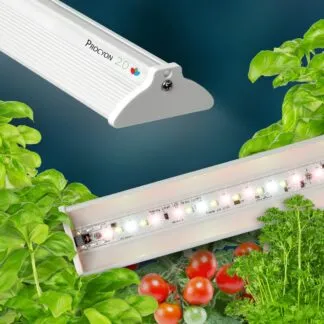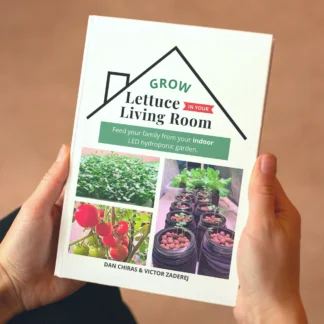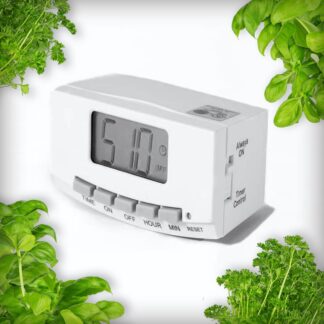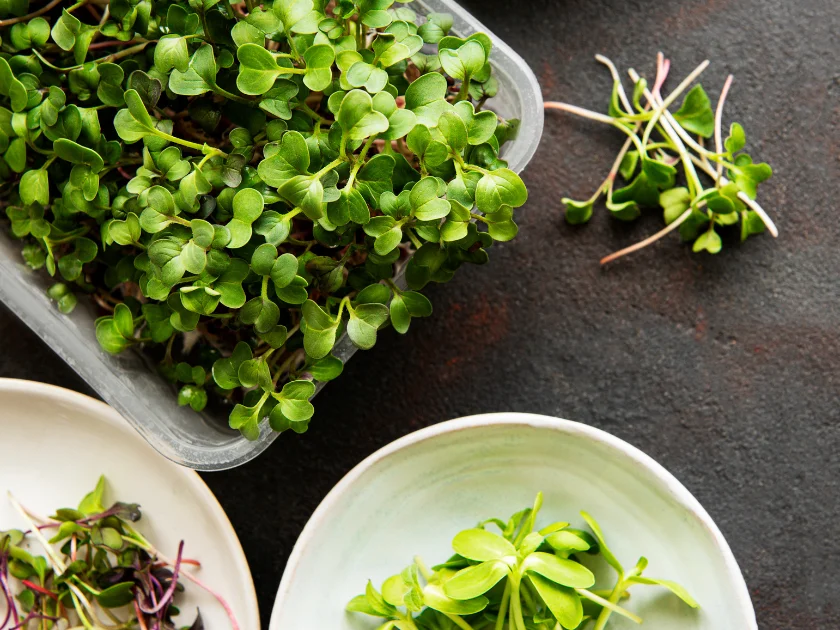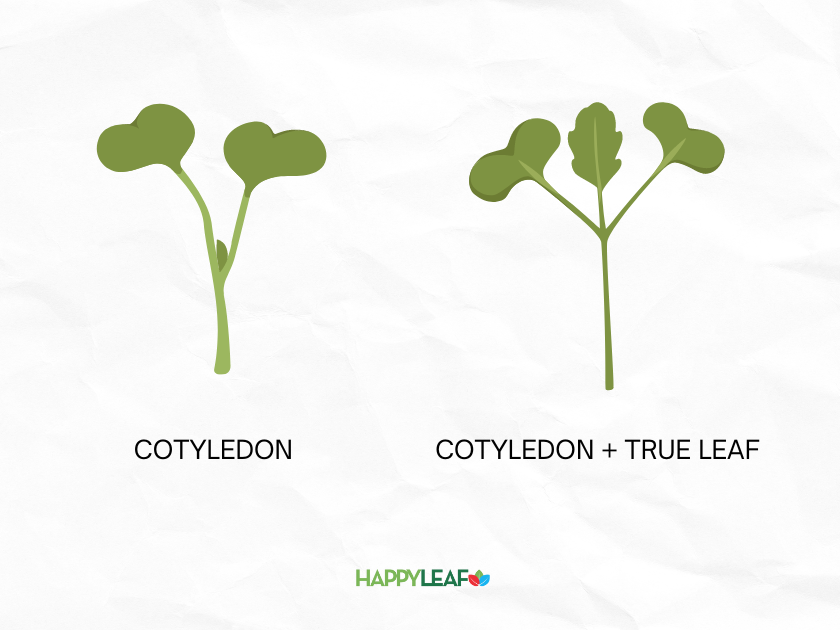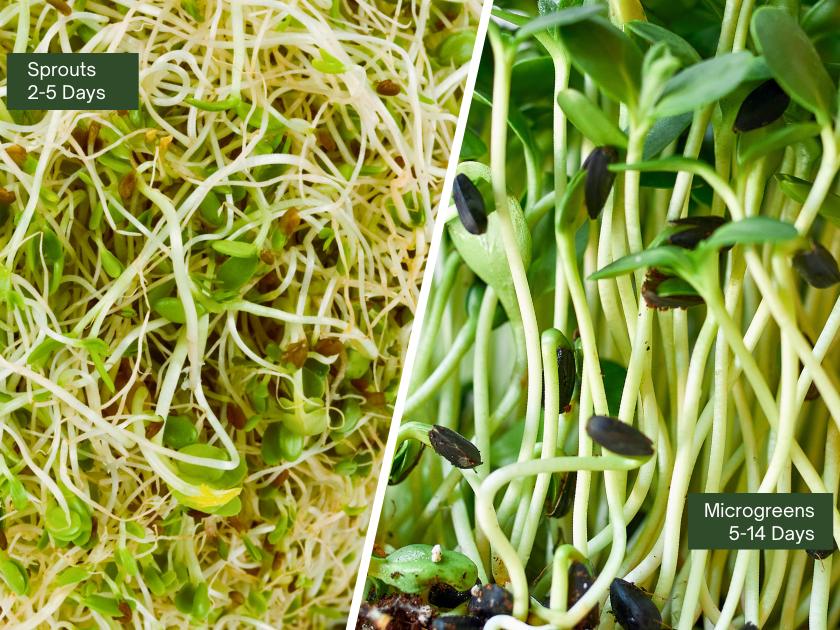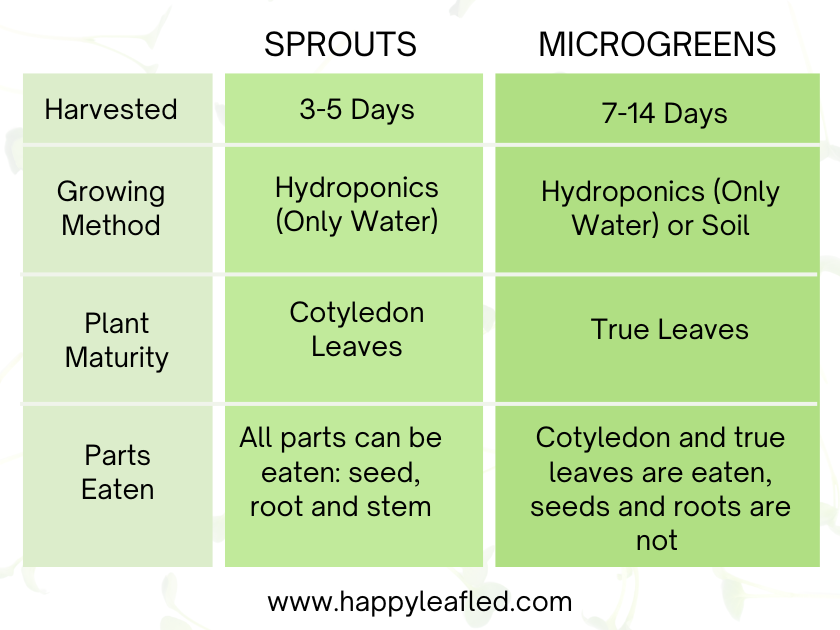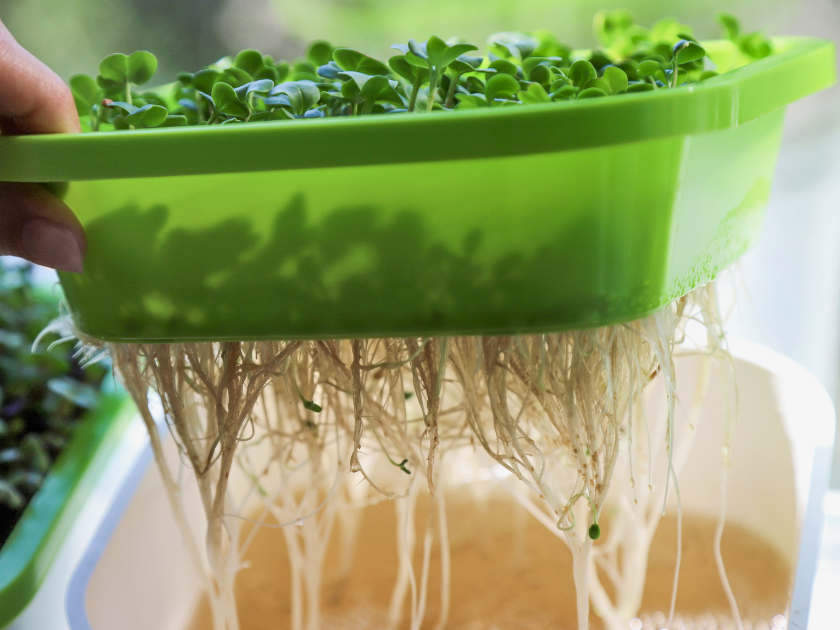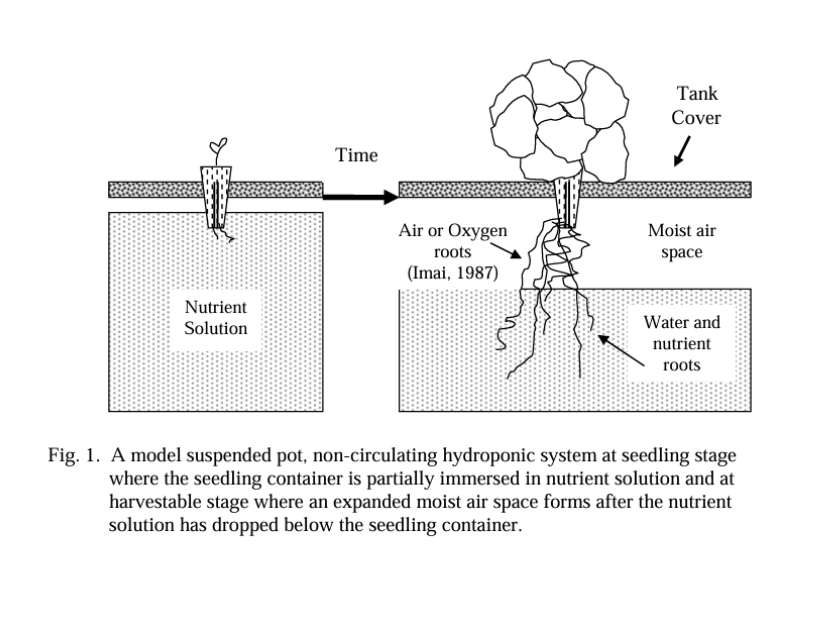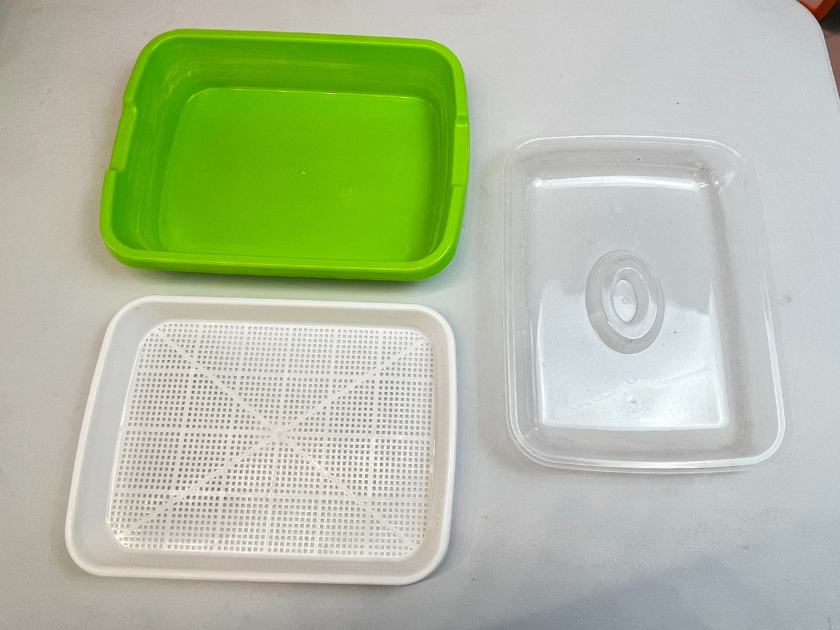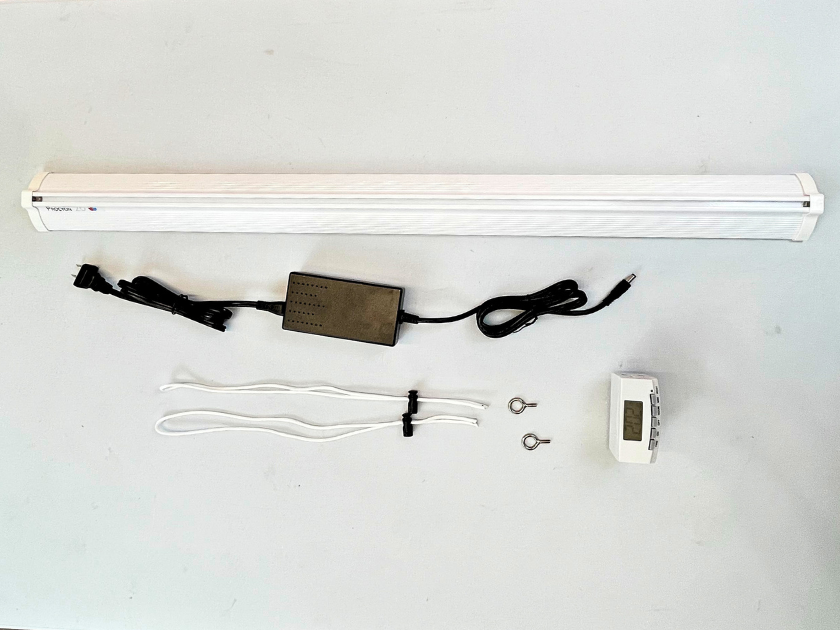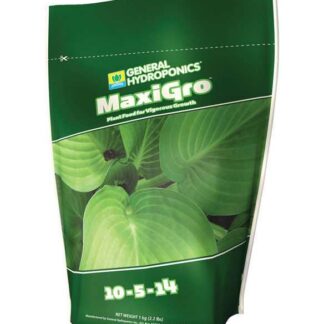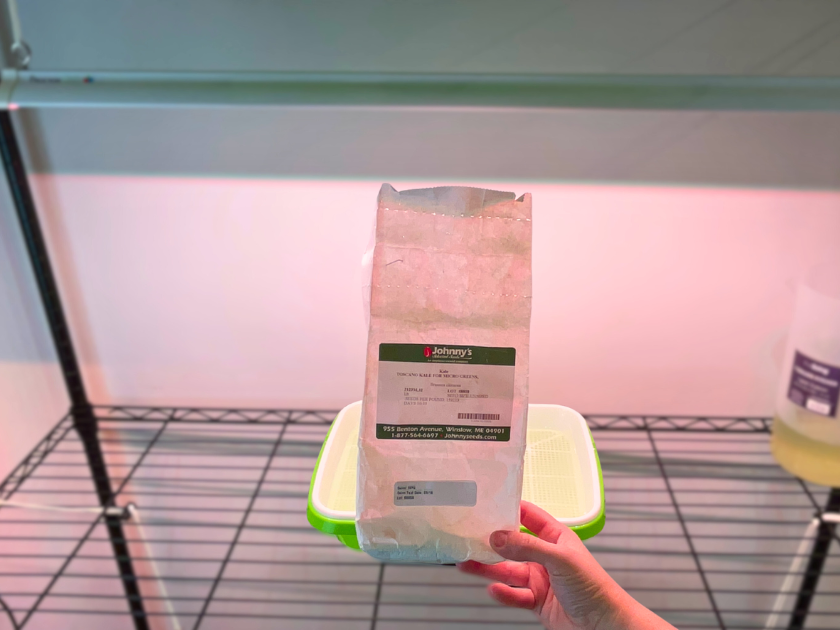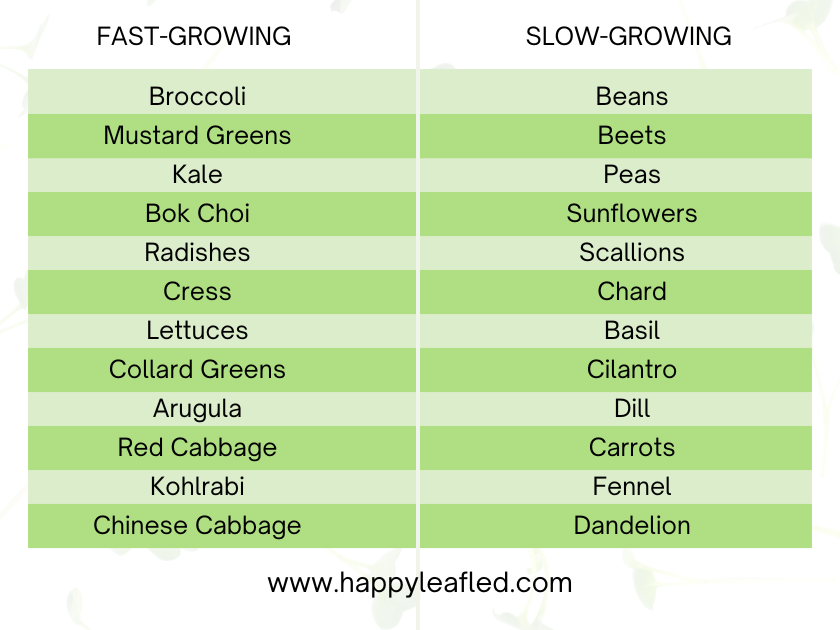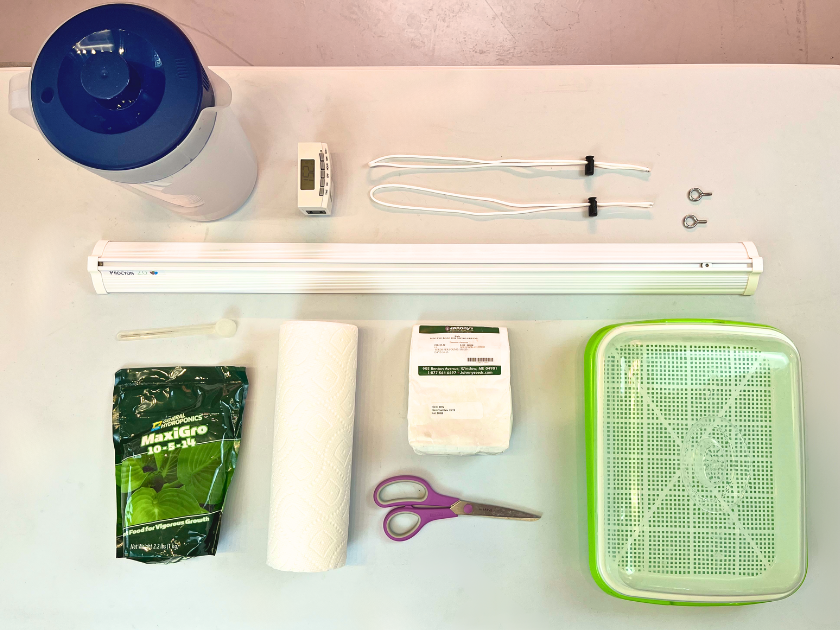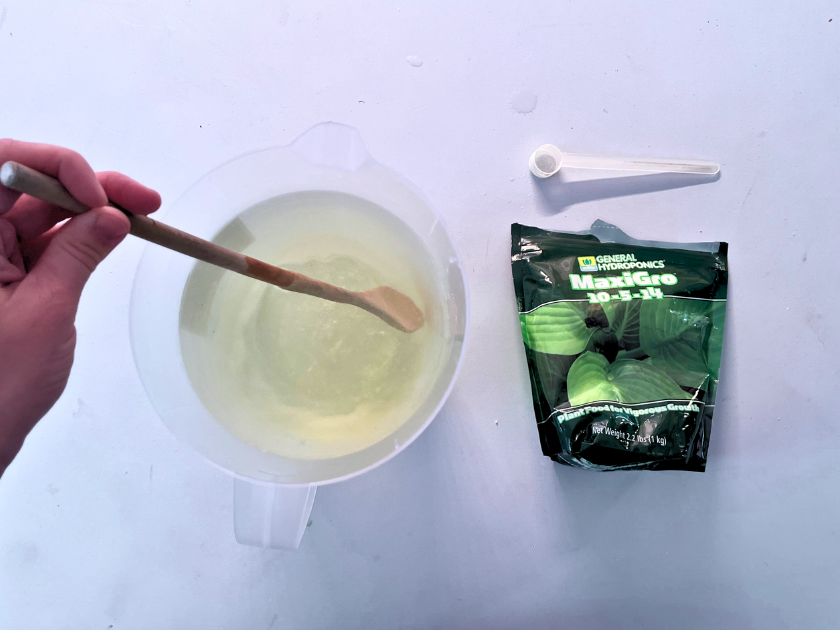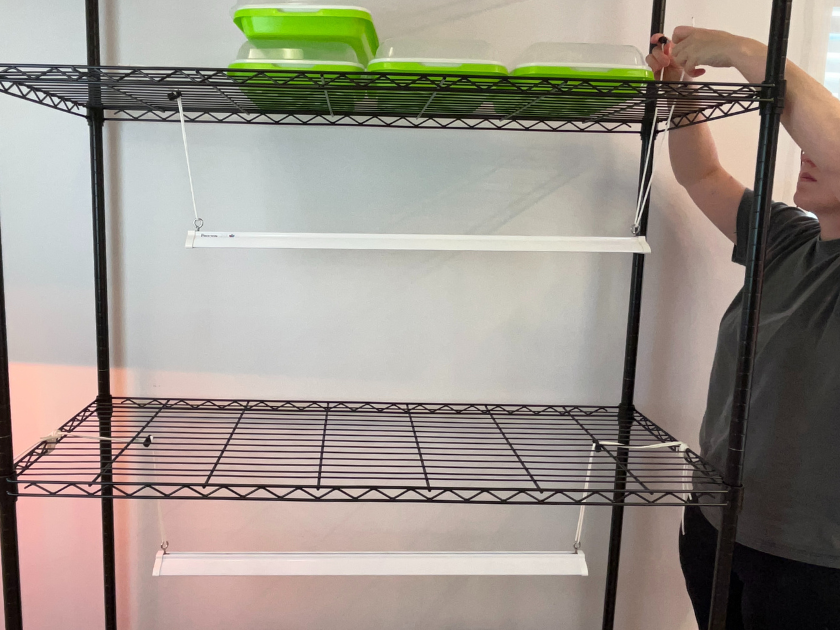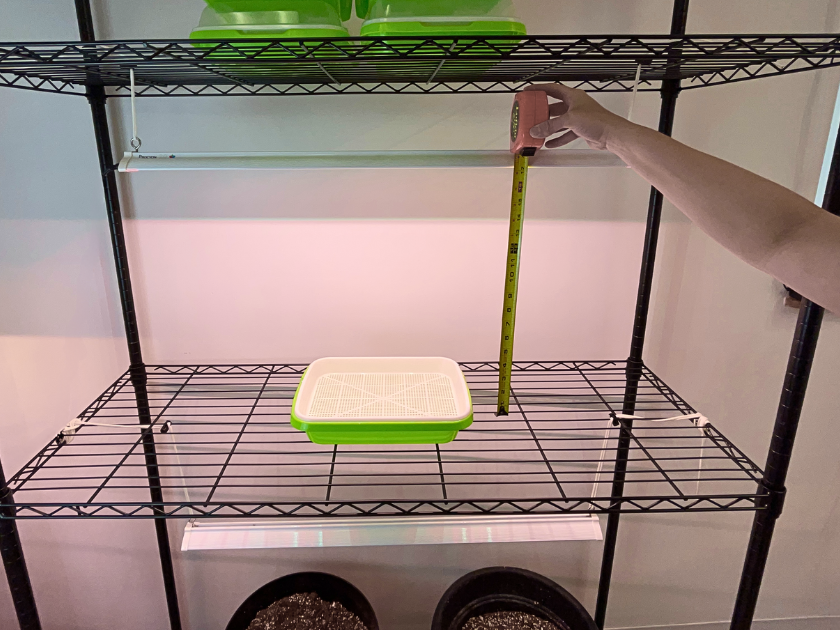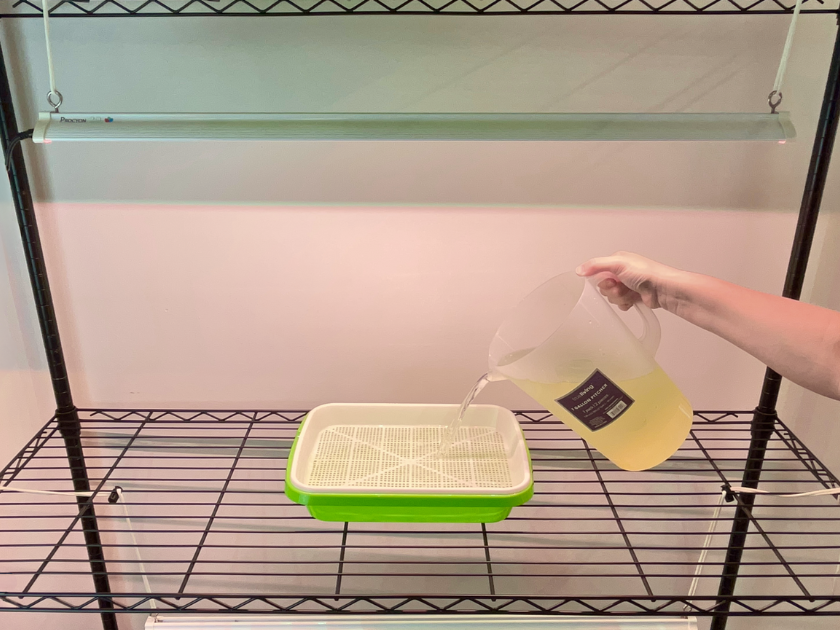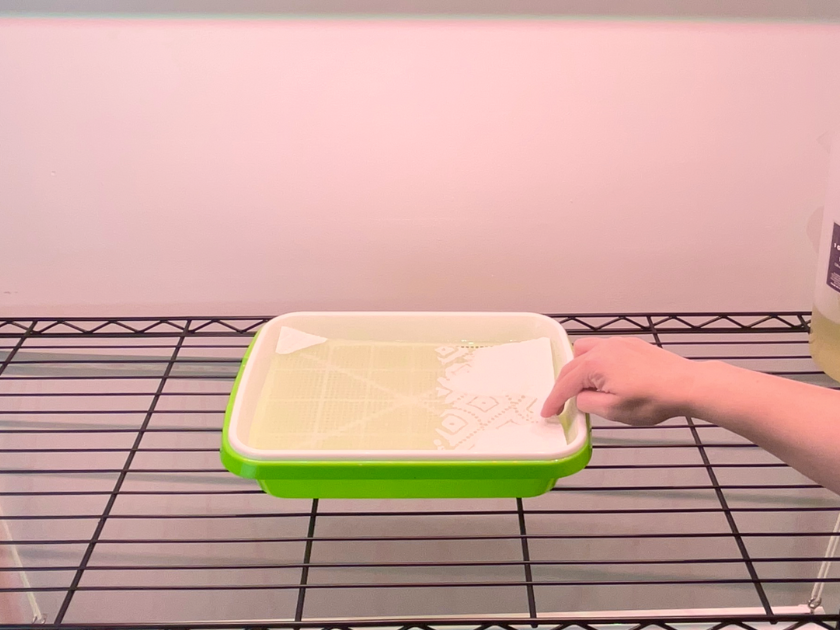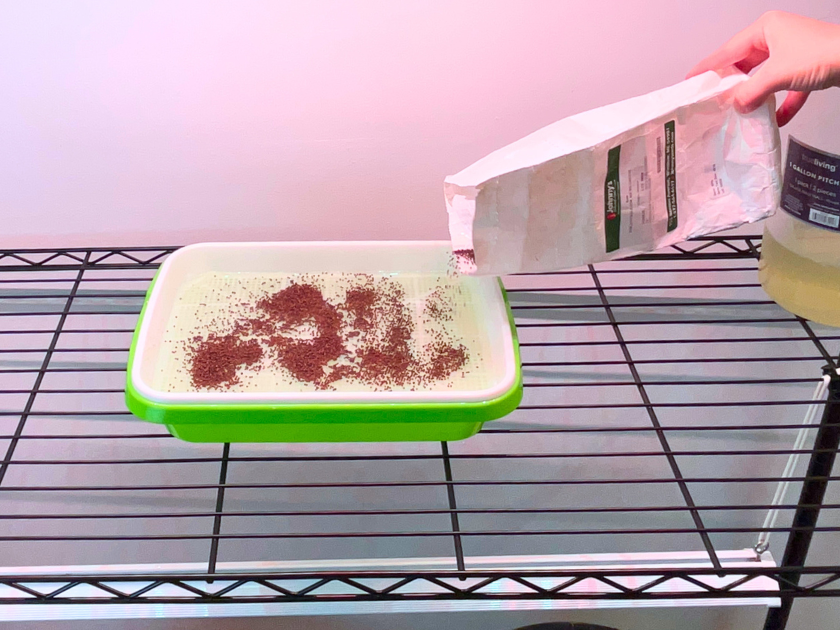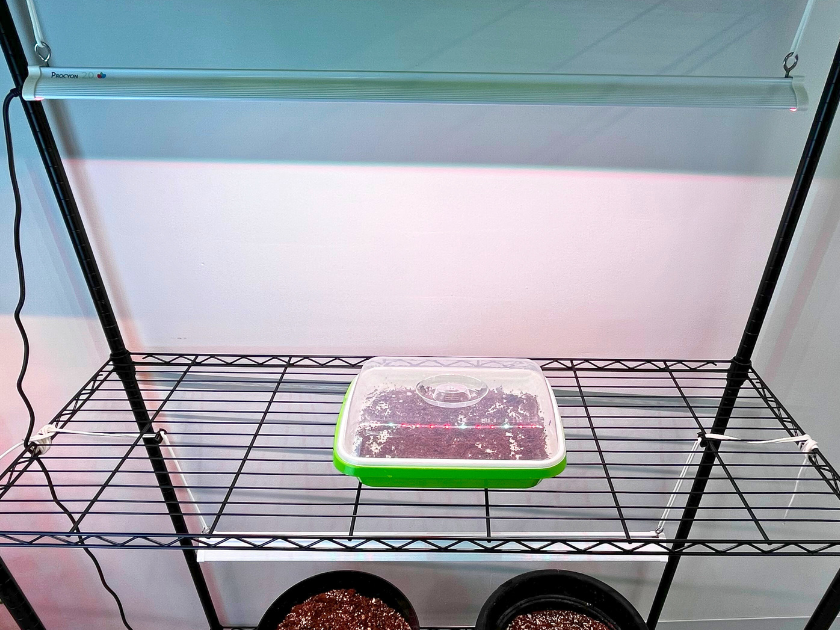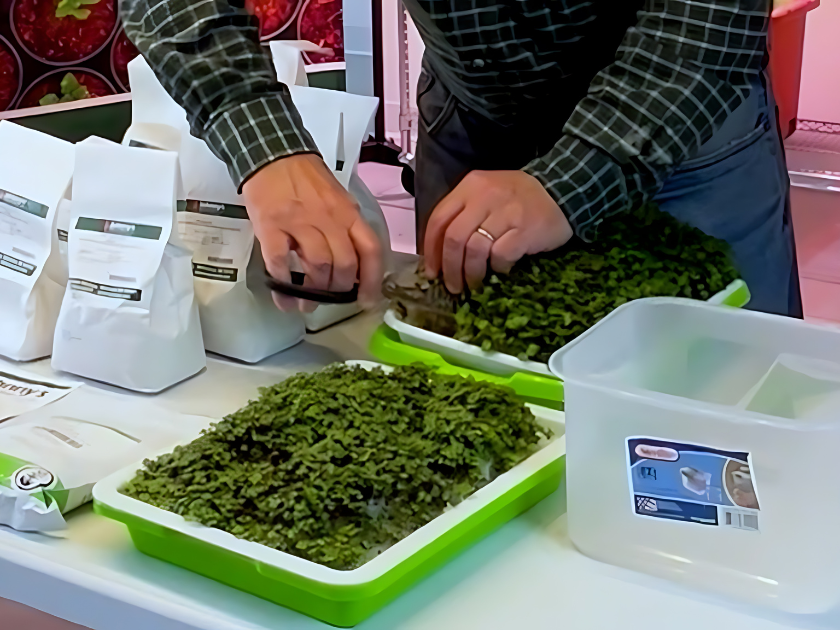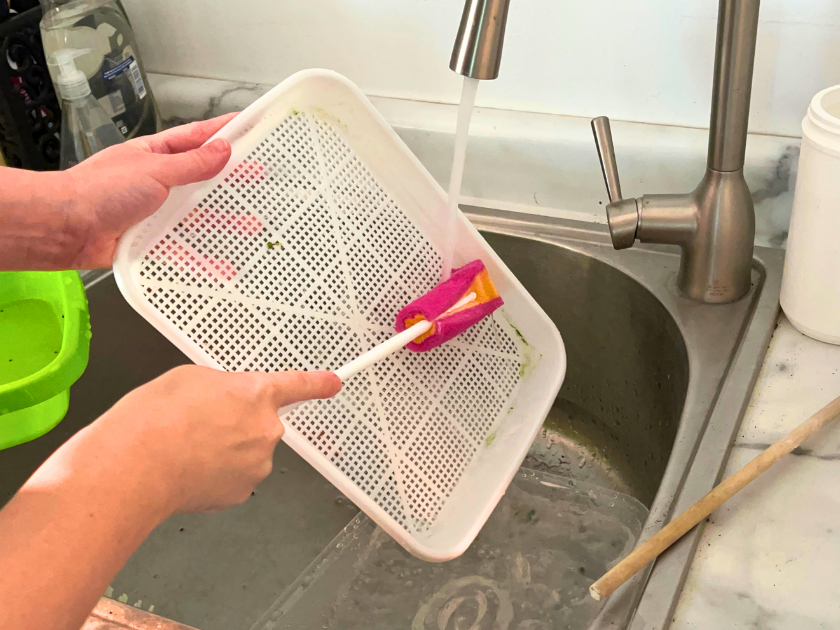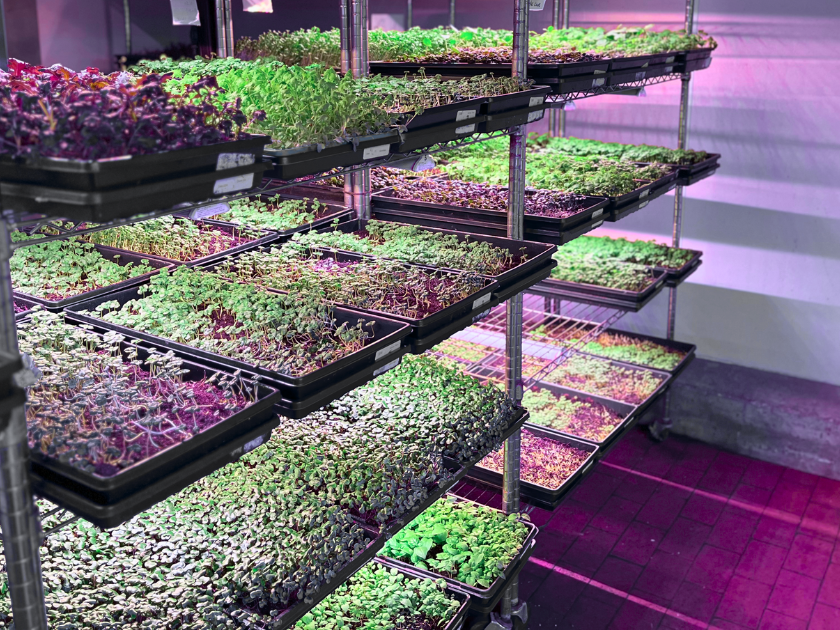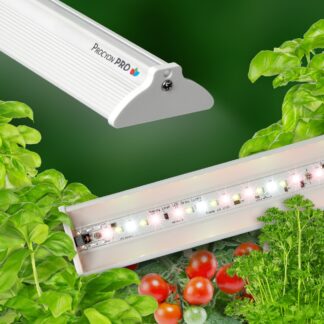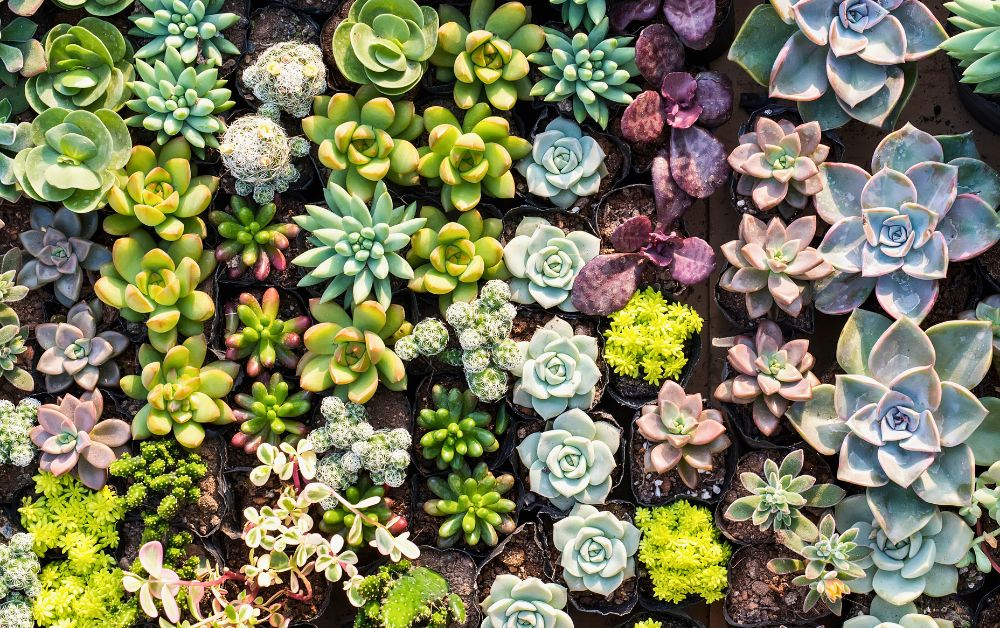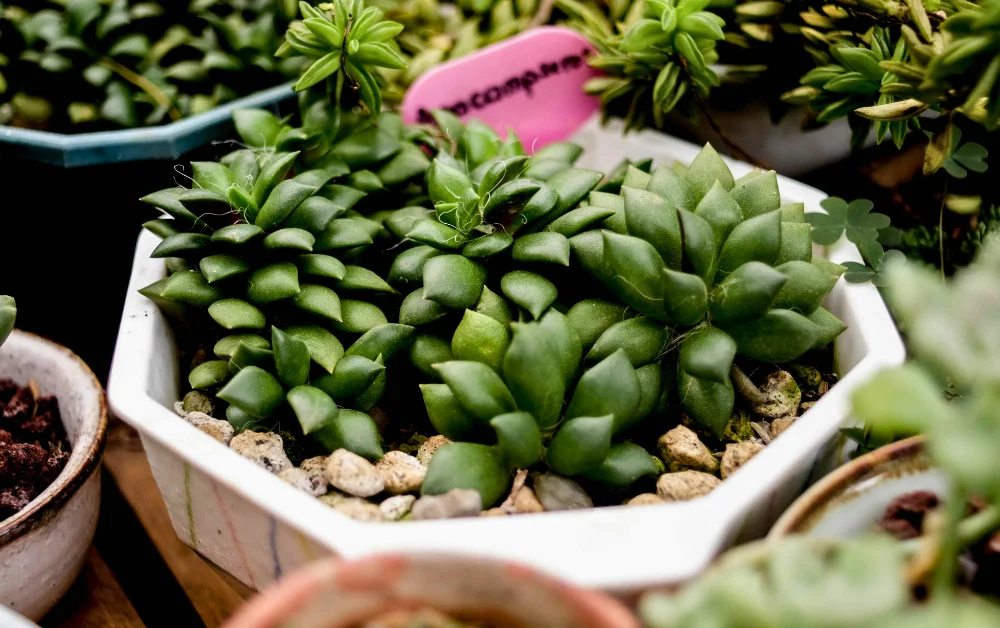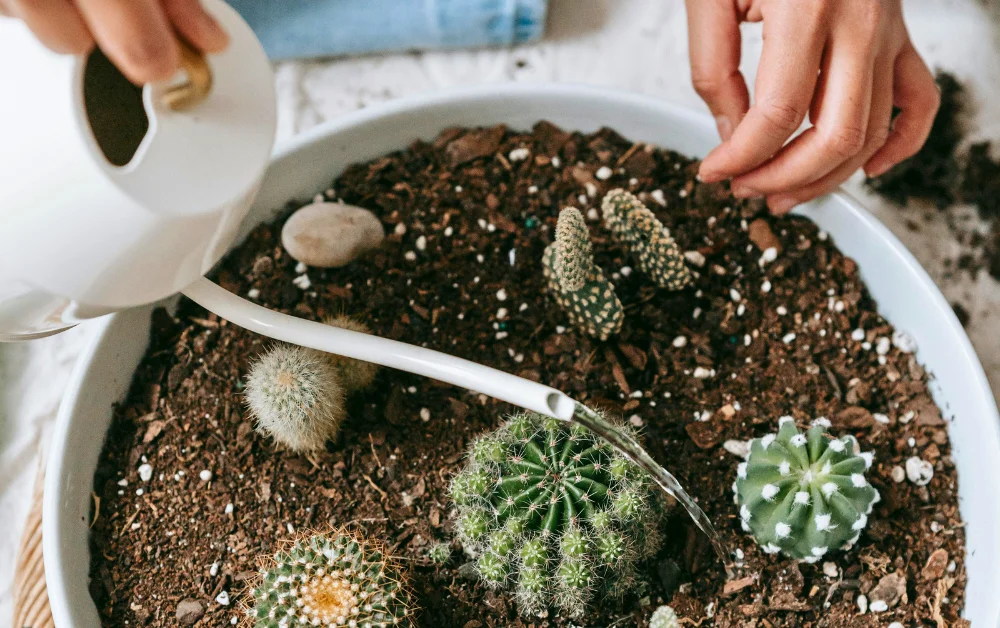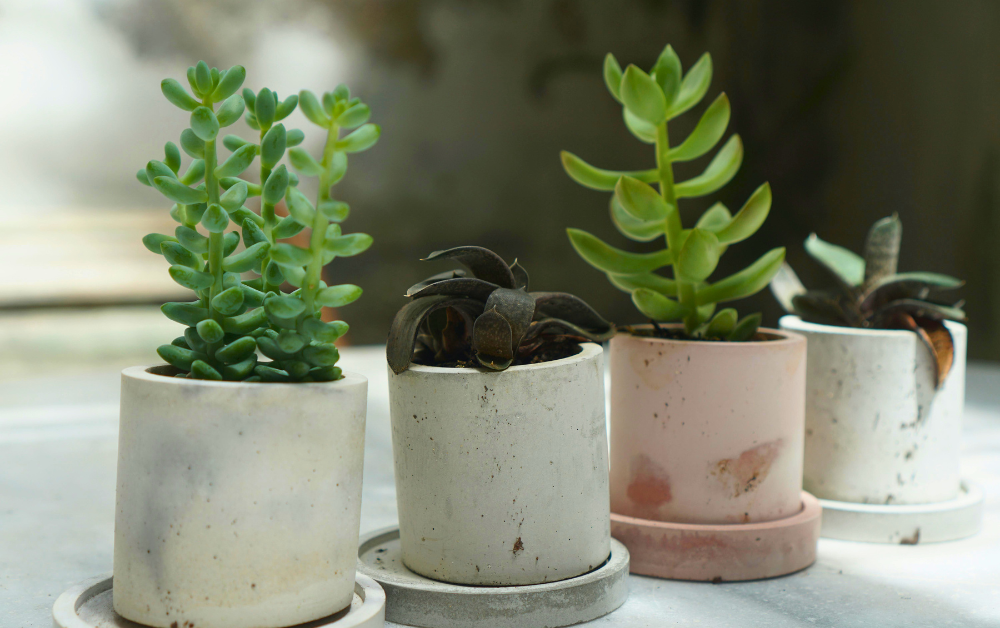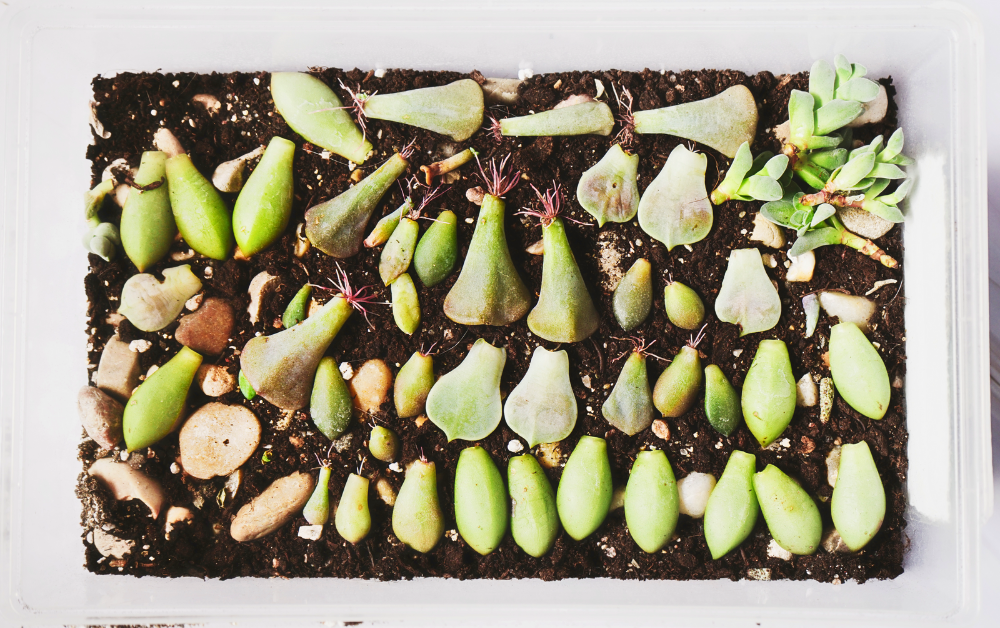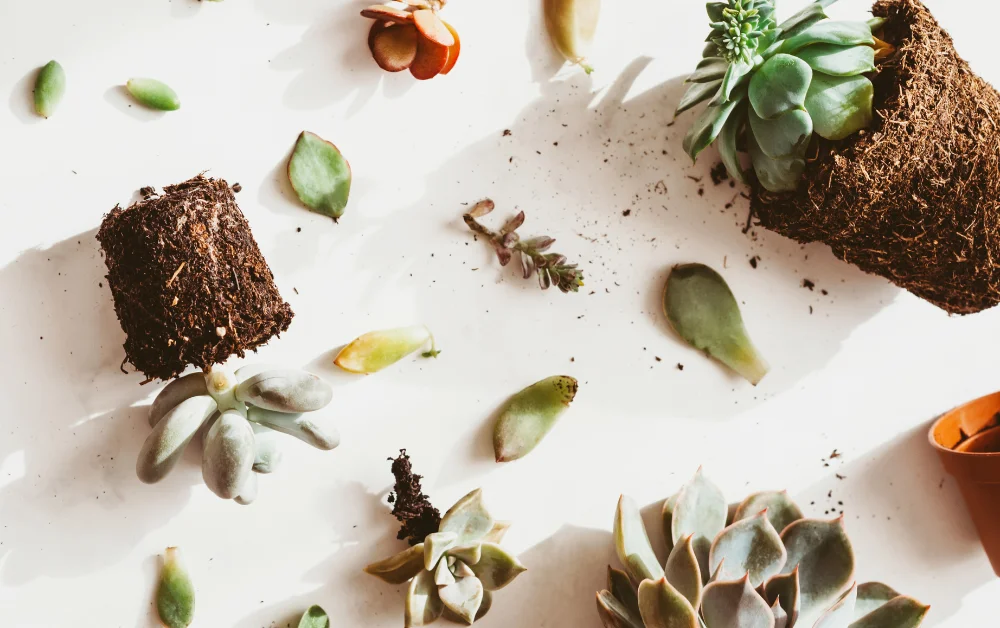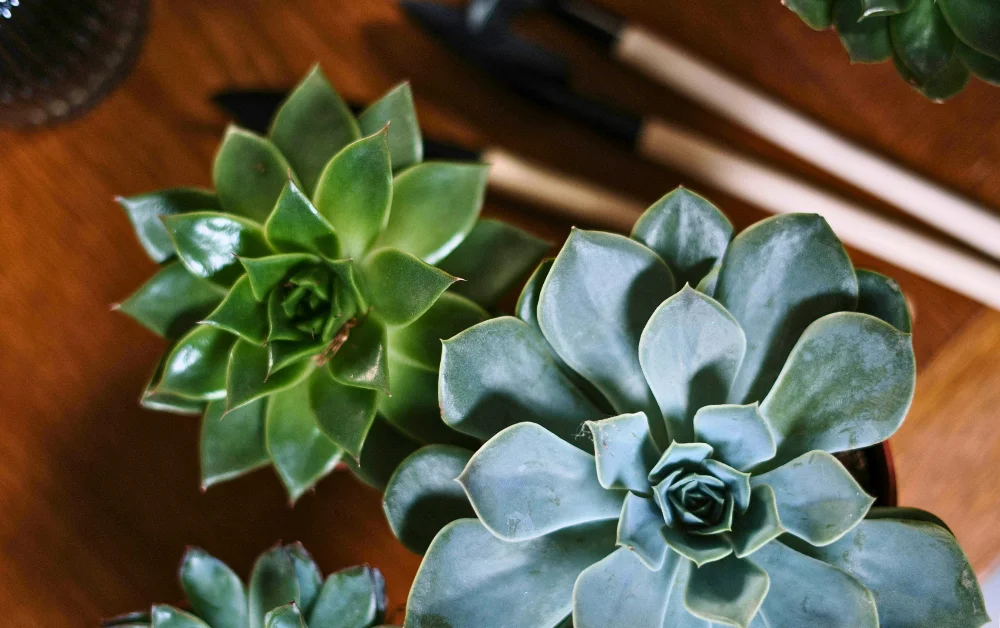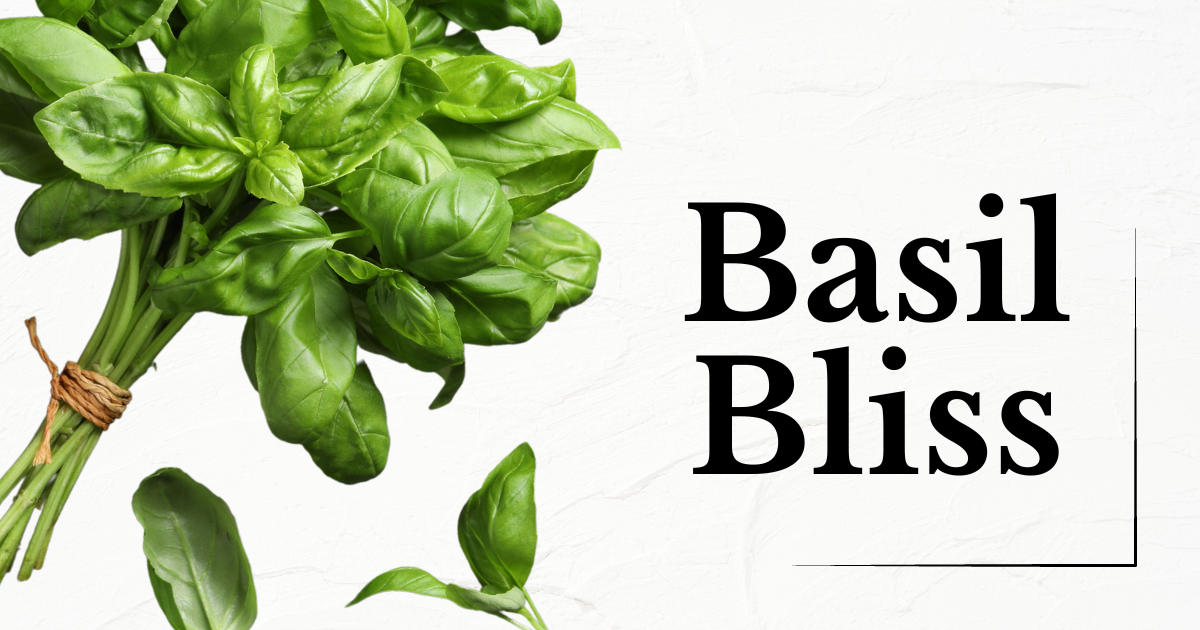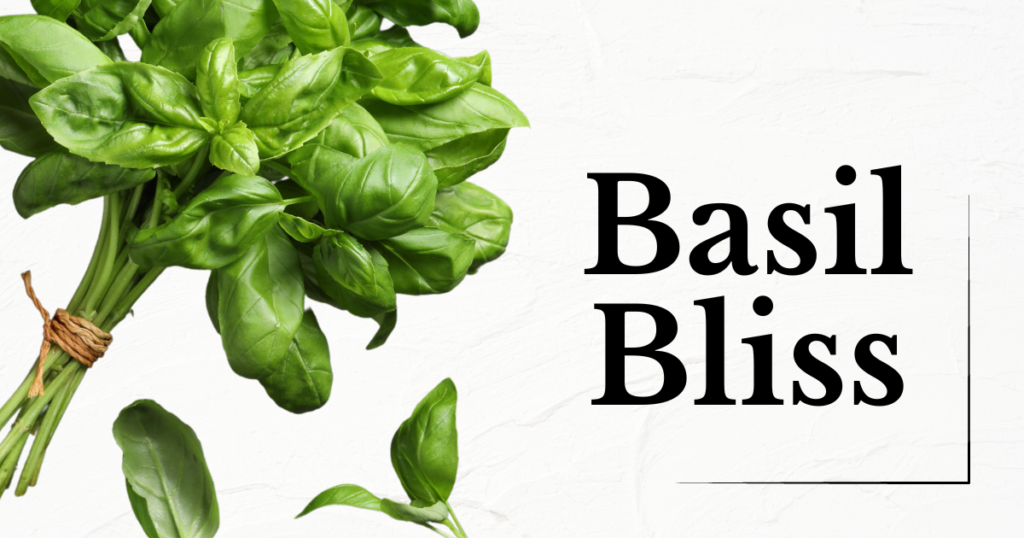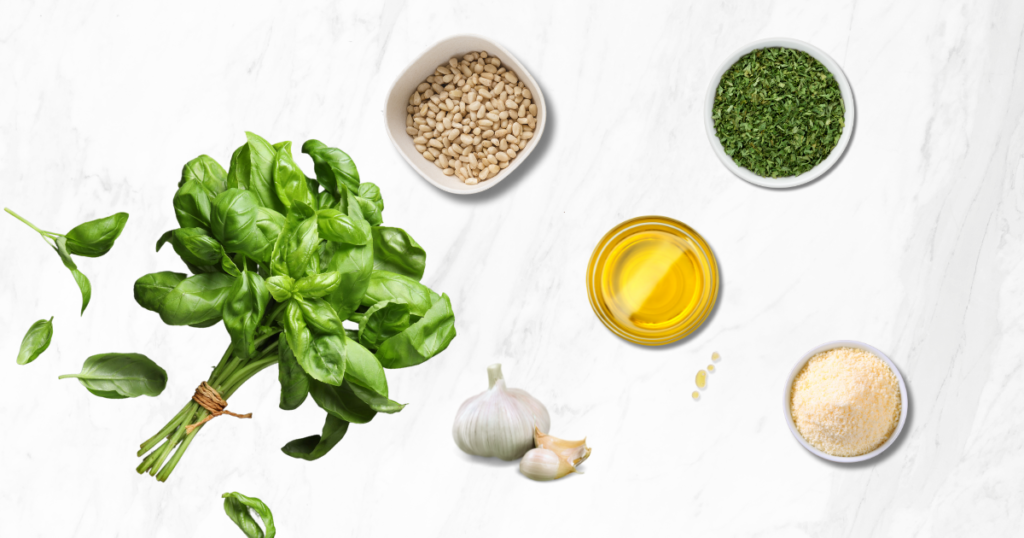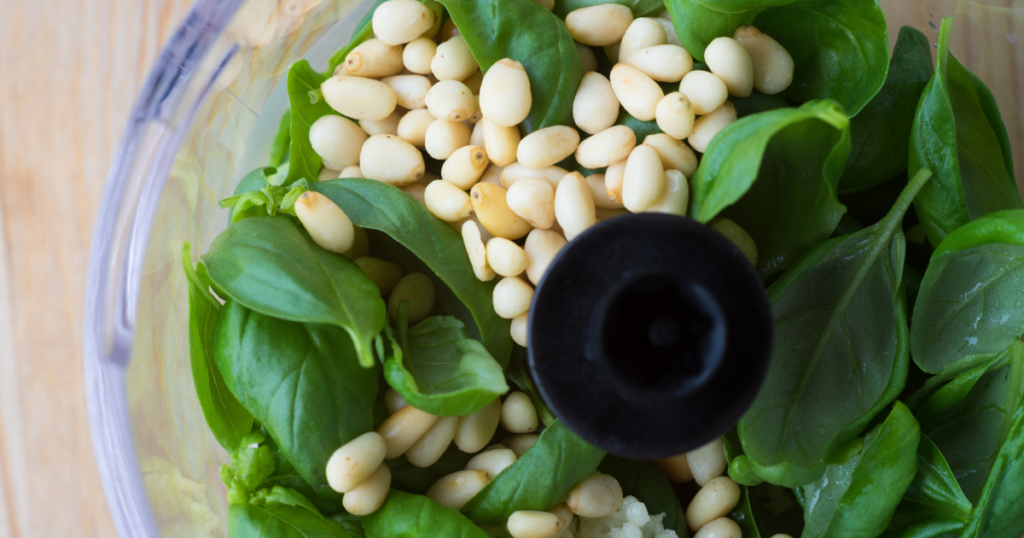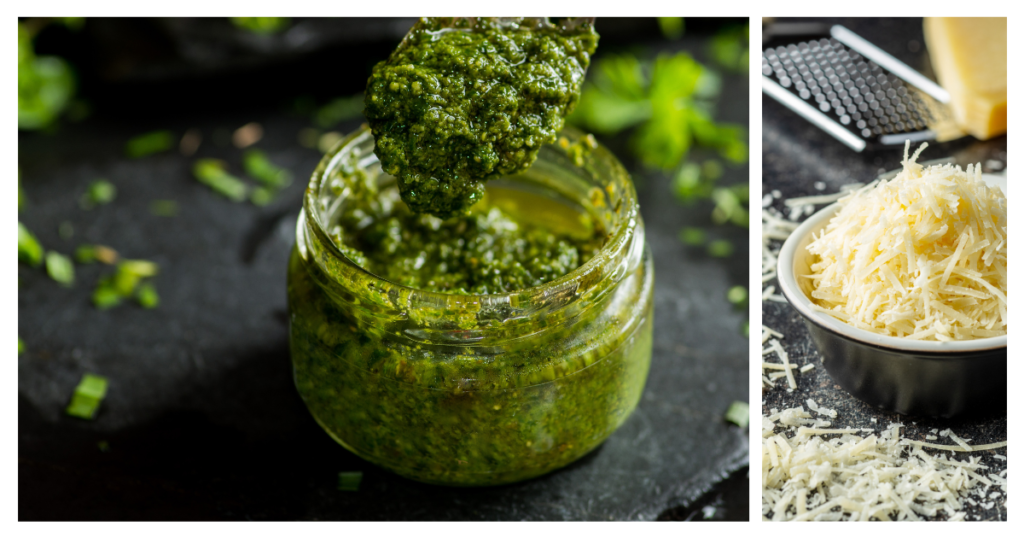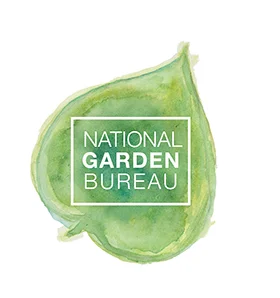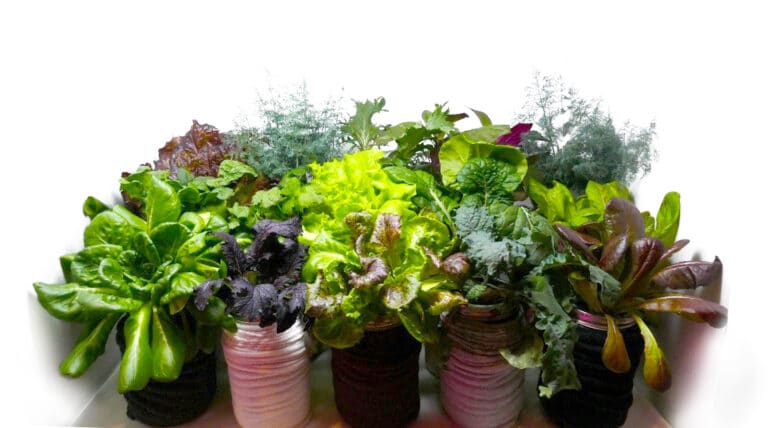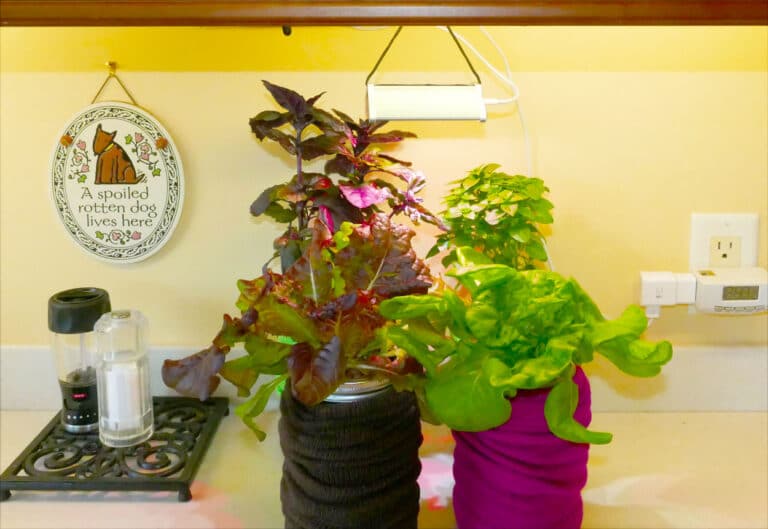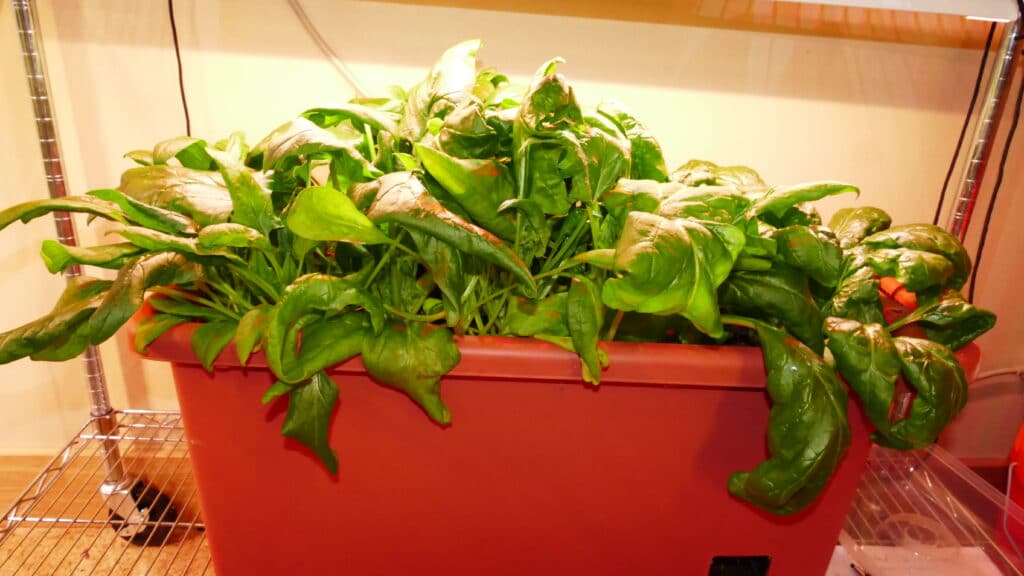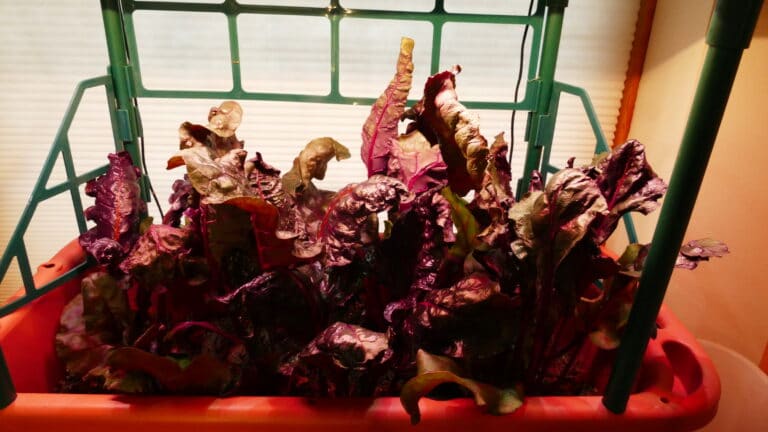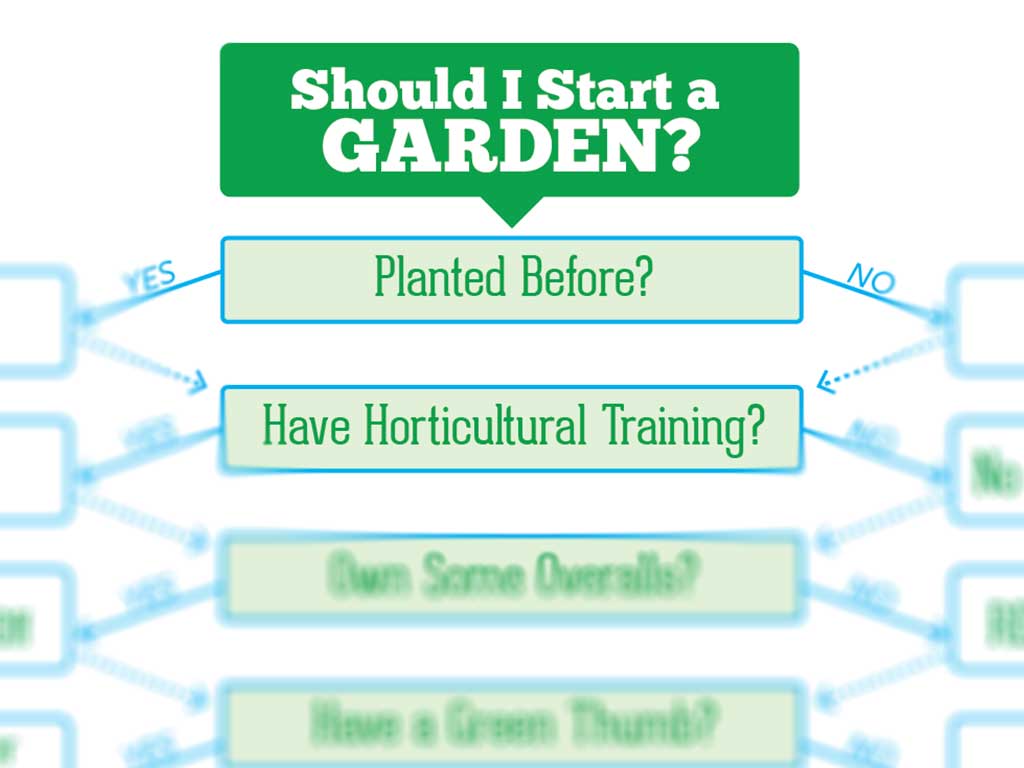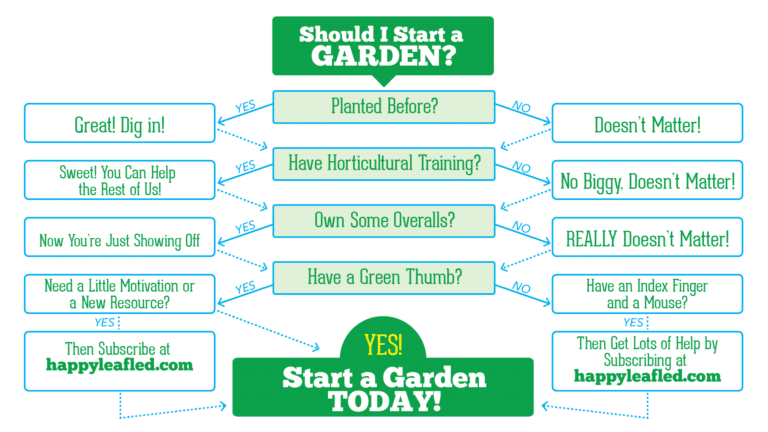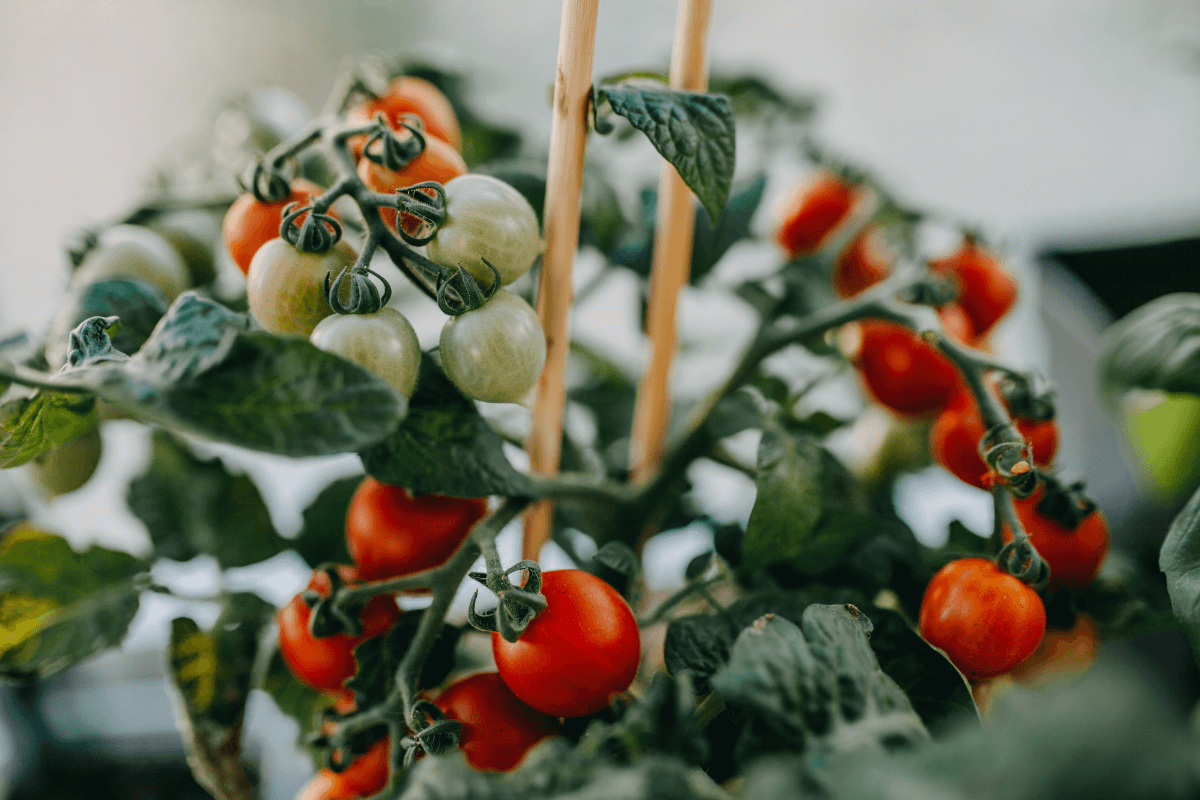
Enjoy Fresh, Homegrown Tomatoes Year-Round—No Outdoor Garden Needed!
Growing tomatoes indoors with LED grow lights lets you enjoy fresh, homegrown tomatoes year-round, even if you don’t have outdoor space or natural sunlight. At the Happy Leaf workshop, we are growing tomatoes indoors in a windowless room using our powerful grow lights that mimic sunlight—so you can do the same!
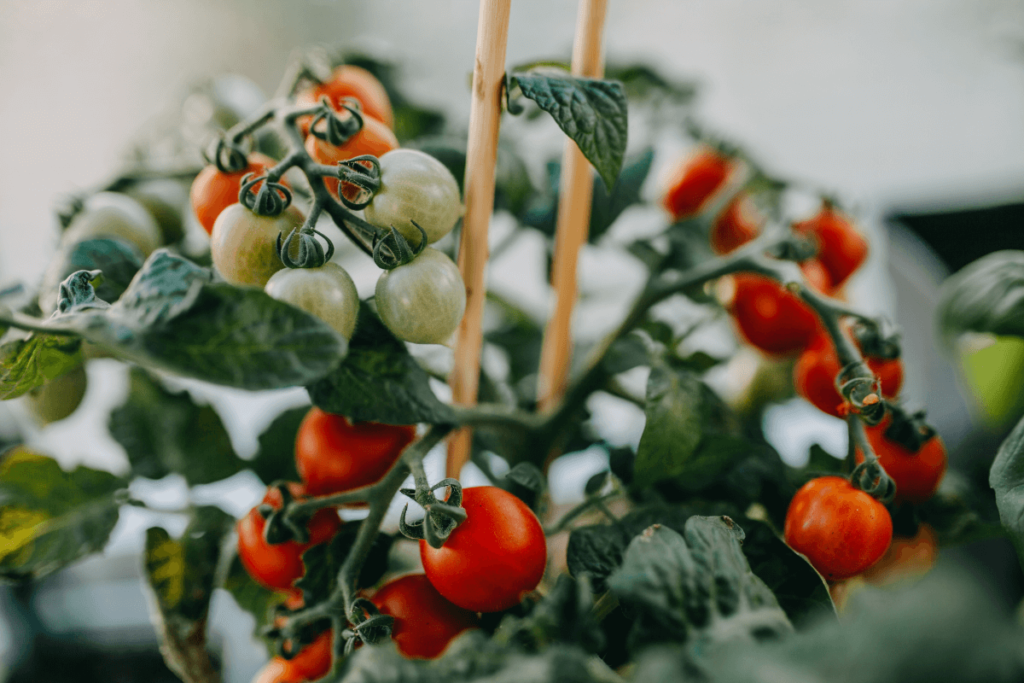
This indoor gardening method is perfect for apartment dwellers or anyone wanting fresh tomatoes during colder months. With a simple indoor setup, you can plant, nurture, and harvest tomatoes in your kitchen, living room, or even a closet.
Growing tomatoes indoors may seem daunting at first, but with the right supplies and setup, you can enjoy an abundant harvest. After testing various tomato varieties, growing mediums, and nutrients, we’ve developed a proven system. Today, we’ll guide you step-by-step to skip the frustration and enjoy growing tomatoes indoors successfully.
Table of Contents
How To Grow Tomatoes Indoors with LED Grow Lights -Part 1 (VIDEO)
Growing Tomatoes Indoors – Complete Step-by-Step Guide
We’re going to dive straight into the step-by-step guide. Keep reading for details on why each recommended item is important and answers to common questions about indoor tomato gardening.
What You’ll Need
Before you start growing tomatoes indoors, gather these essential supplies:
- Compact variety tomato seeds (see below for more details)
- 17” Procyon 2.0 Happy Leaf LED Grow Light (full-spectrum)
- Programmable Timer
- 14” Self-Watering Container (Bloem or Walmart brands are two options)
- Tomato cage or support structure (see below for more details)
- Growing medium – 50/50 mix of coconut coir and vermiculite (see below for more details)
- Nutrients/Fertilizer: We recommend Maxigro for seed starting and Maxibloom for flowering and fruiting (see below for more details).
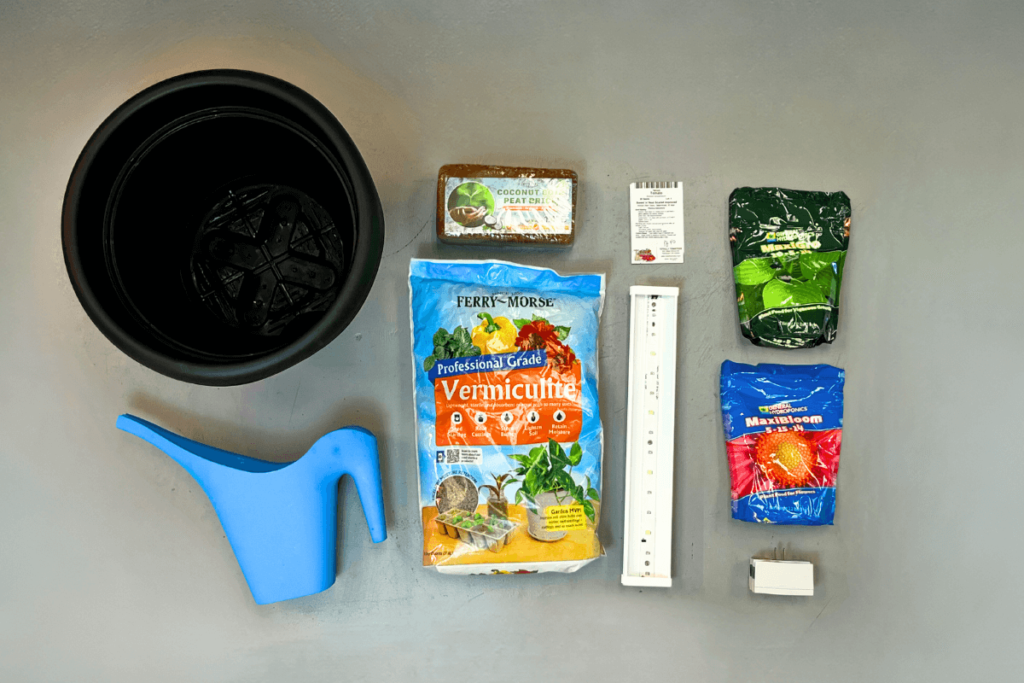
Step 1: Prepare Indoor Garden Space – Using Grow Lights for Tomatoes
Your grow light is the key to growing tomatoes indoors successfully. Set up your space before planting the seeds.
You can start the seeds in the same container you will grow them in.
Instructions:
- Choose Your Space: Select a location with enough room for both your plants and grow light, such as a wire baker’s rack, a closet, or even a corner of your living room. The optimal indoor temperature for tomatoes to grow is between 65° – 80° Fahrenheit, which aligns with the average temperatures in most U.S. homes.
- Install the Grow Light for tomatoes: Position the Happy Leaf Procyon 2.0 LED grow light 12-18 inches above your plants. This light provides the ideal intensity for indoor tomato growth. As the tomato plant grows, adjust the height of the light using the strings and hardware included with your grow light to maintain the optimal distance.
- Set a Timer: Tomatoes need 16-18 hours of light per day, so use a timer to automate the process. Ensure the grow light schedule stays consistent, as this is essential for proper plant development. While seeds don’t need light to germinate, setting up your grow light and timer at this stage saves you from needing to remember to set them up once the seeds begin to sprout.

Tip: Avoid placing your tomato setup near vents or in unfinished basements where temperatures may fluctuate or drop too low.
Step 2: Plant the Tomato Seeds
Starting from seeds ensures your plants adapt well to indoor conditions right from the start. This is the time to mix the growing medium that will be used from start to finish.
Instructions:
- Prepare the Growing Medium: Expand the coco coir brick according to package directions. In a large container, mix equal parts coconut coir and vermiculite. This mixture provides excellent drainage and root aeration.
- Fill the Container: Add the growing medium to the container, filling it nearly to the top but leaving about 3 inches of space unfilled. Gently press down the mix to create a firm, even surface.
- Plant the Seeds: Use your finger to make indentations in the growing medium of about ¼ inch deep in the soil. Place one seed in each hole and cover lightly with soil.
- Watering: Generously water the seeds from the top for the initial watering. After this, only water the plant using the reservoir located near the bottom of the container.
- Place Under Grow Light: Once planted, position the container under the Procyon 2.0 grow light, keeping it on for 16-18 hours per day. While seeds don’t need light to germinate, setting up your grow light and timer at this stage saves you from needing to remember to set them up once the seeds begin to sprout.
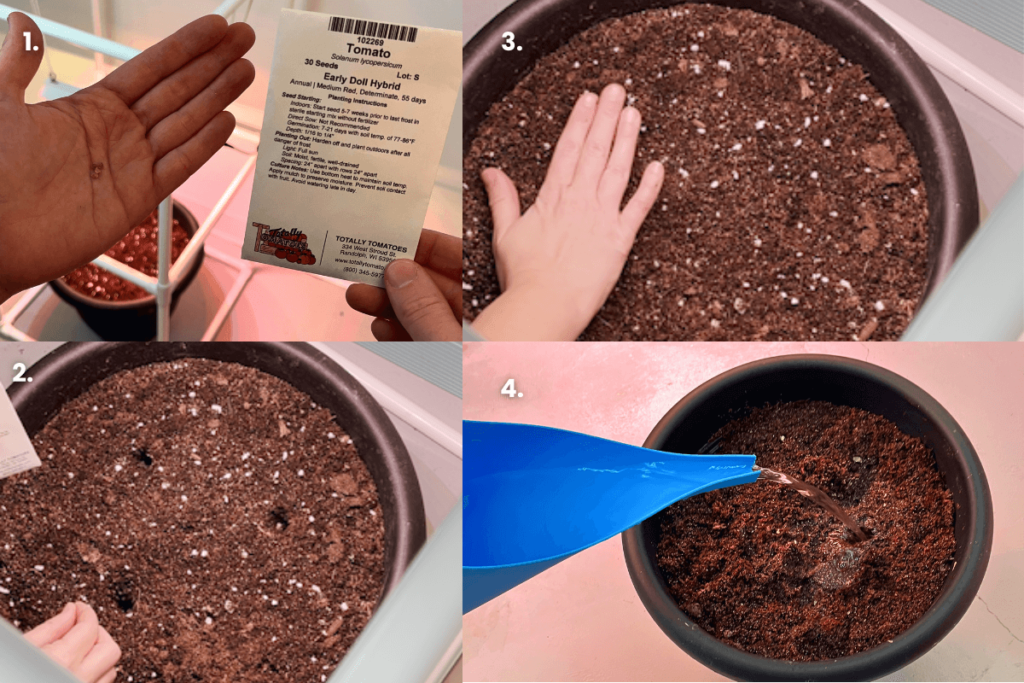
Step 3: Select / Thin Your Seedlings
After 3-4 weeks, your tomato seedlings should be 4-5 inches tall. We recommend growing only one tomato plant per container, so you can either transplant the extra tomato plants into another container or simply thin out the seedlings by choosing the strongest looking seedling.
Instructions:
We recommend growing only one tomato plant per container, so you can either transplant the extra tomato plants into another container or simply thin out the seedlings by choosing the strongest looking seedling. In the example below we would keep the plant located on the right as it is taller and healthier looking.
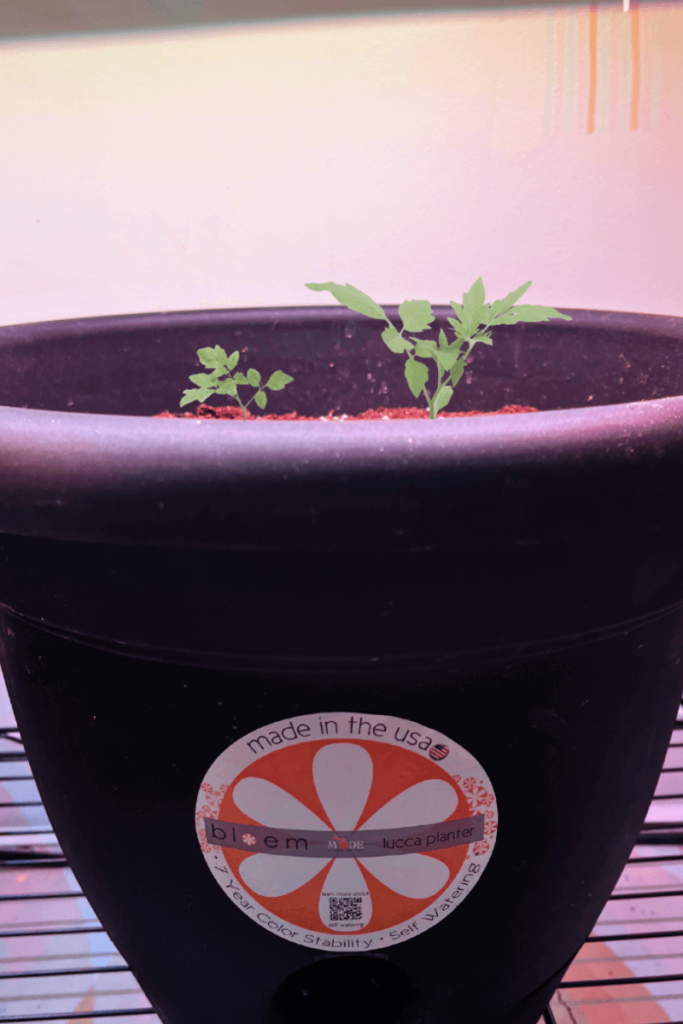
Step 4: Care and Maintenance
Proper care will ensure that your indoor tomato plants thrive and produce a bountiful harvest.
Instructions:
- Watering Schedule: As mentioned above, start with a generous watering from the top, then switch to providing water only through the container’s self-watering reservoir. Check the reservoir every few days, adding nutrient-rich water as needed. Once the plant begins blooming, it may require more frequent watering.
- Nutrients: Fertilize your plants with Maxigro 10-5-14 during the early growth stages. Once the plant starts flowering, switch to MaxiBloom to promote fruit production. We recommend this brand as they are one part and don’t require measuring different quantities. See below for more information.
- Pruning: Remove any lower leaves that aren’t producing fruit. Pruning encourages better airflow and reduces the risk of disease.
- Pollination: Another advantage of growing tomatoes indoors is that they are self-pollinating, so you don’t need to worry about manually brushing the flowers or shaking the plant, though doing so won’t harm it. If desired, you can also use a small fan to promote airflow.
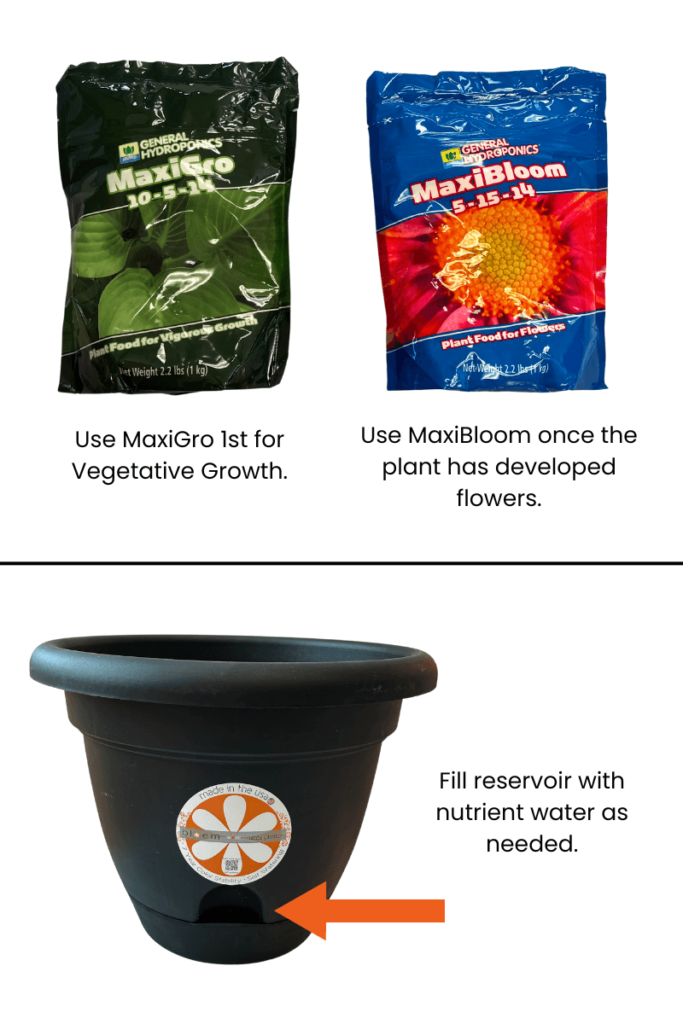
Common Problems and How to Solve Them
Even with a great indoor setup, some issues may arise, but they’re easy to overcome with the right knowledge.
Common Issues:
- Yellowing Leaves: Indicates nutrient deficiencies (typically nitrogen or magnesium). Make sure you are following the directions on the nutrient package.
- Curling Leaves: Often due to overwatering, excess heat, or lack of pruning. Using a self watering container will help avoid this issue. If not using a self-watering container, adjust your watering schedule and ensure proper ventilation.
- Pests: While rare indoors, aphids and spider mites can appear. Use a mixture of water and dish soap or neem oil to wipe down the leaves.
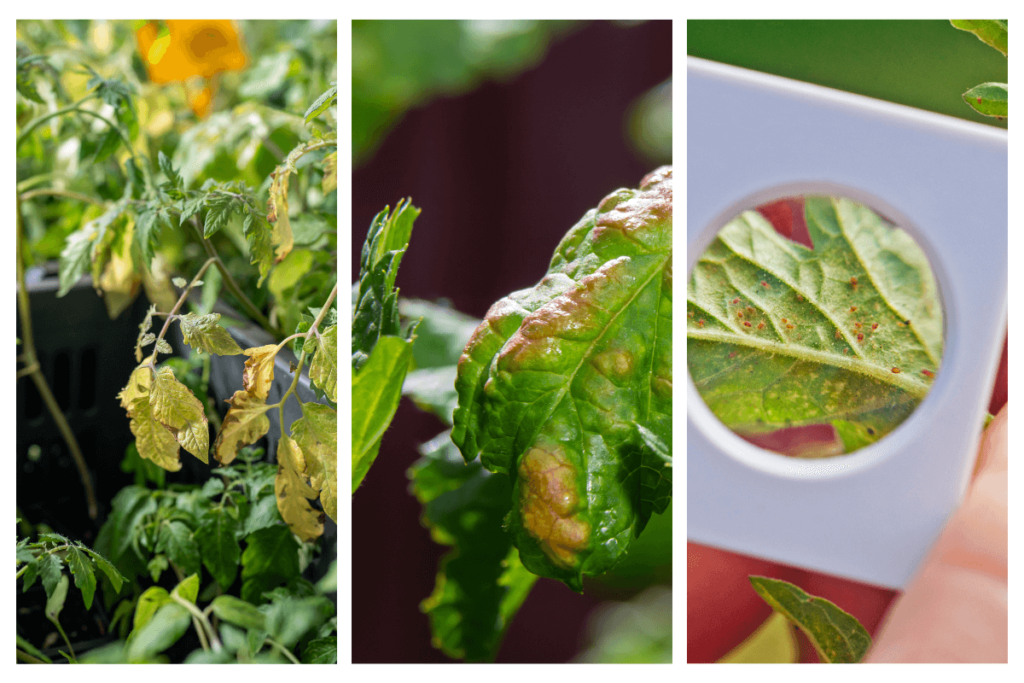
Step 5: Harvesting Your Indoor Tomatoes
In about 60-80 days, you’ll start to see ripe tomatoes forming on your plants. Here’s how to know when they’re ready and how to harvest them.
Instructions:
- Check for Ripeness: Look for full, vibrant colors depending on the variety (red, orange, or yellow). The tomatoes should be slightly soft to the touch.
- Harvest Gently: Twist the ripe tomato off the vine or use scissors to cut the fruit. Be careful not to pull too hard, as this can damage the plant
- Continue Producing: Your indoor tomato plant can continue producing fruit for months with proper care, so be sure to regularly water and fertilize it after each harvest.
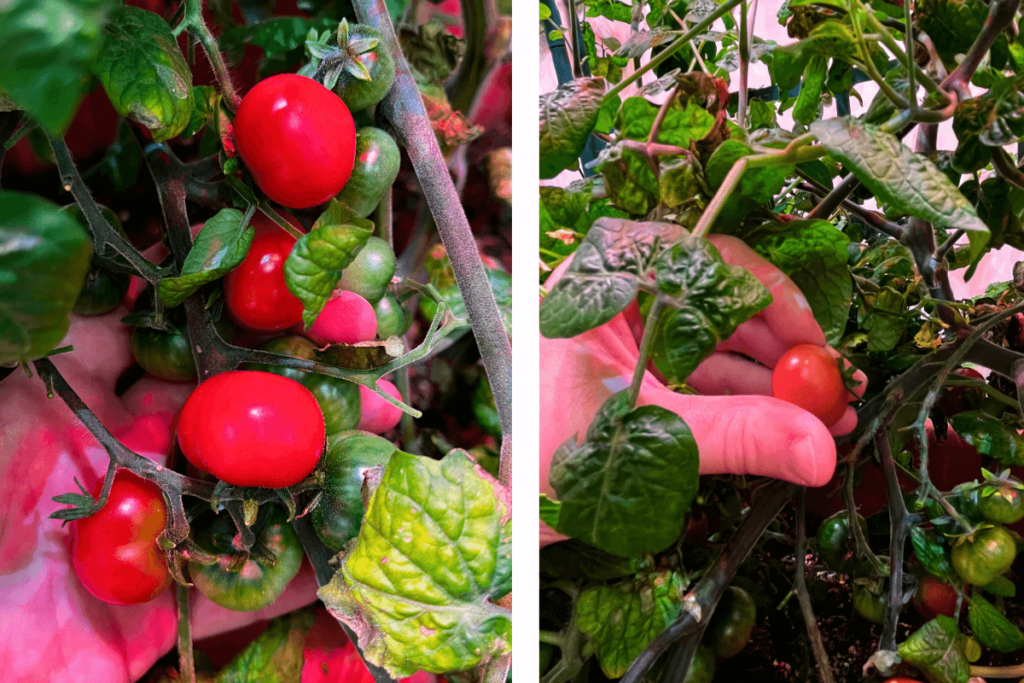
Tip: If you’re not ready to eat your tomatoes right away, store them at room temperature to ripen further.
Step 6: Starting A New Crop
When growing tomatoes indoors, it’s important to recognize when your plants have reached the end of their productive life. Over time, the plants will stop producing fruit and begin to look dry and scraggly—this is your cue to start a new crop.
Instructions:
- Remove Organic Matter: Pull out all roots and leftover plant material from the growing medium.
- Dry It Out: Allow the coco coir to dry completely before reusing it. Seeds tend to germinate better in dry coco coir.
If you experienced frequent issues with disease or pests during your grow, it’s a good idea to wash and sanitize your container before starting your next grow cycle.
Choosing the Best Supplies for Indoor Tomato Gardening
Best Indoor Tomato Varieties
Growing tomatoes indoors can be rewarding, but not all varieties are suitable, especially for beginners. To achieve the best results in limited space, consider choosing compact or dwarf varieties. Here are our top picks :
- Tiny Tim: Compact and ideal for small spaces, producing small, sweet tomatoes.
- Totem: This dwarf variety thrives in containers and small spaces, making it easy to manage.
- Red Robin: A high-yielding variety that offers small, flavorful tomatoes.
Fun Fact: Red Robin tomatoes were the first tomato variety to be grown in space!
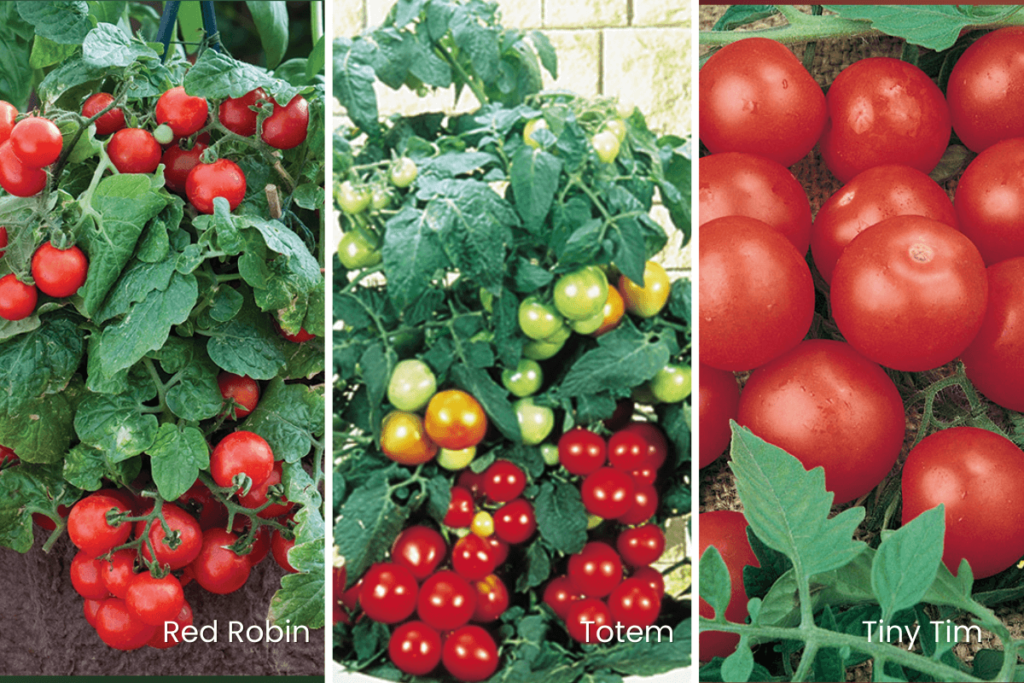
Can I Grow Full-Size Tomatoes Indoors?
Yes, you can grow full-size tomatoes indoors, but they come with challenges such as needing significant support due to their size and long vines. For easier management and better productivity, compact varieties are recommended.
Should I Start from Seeds or Seedlings?
Starting from seeds is the best option. At Happy Leaf, we always begin our tomatoes from seed to provide consistent lighting conditions, reducing stress during the transition to indoor environments.
The Best Grow Lights for Tomatoes
For anyone interested in having the best grow lights for tomatoes, we recommend the Happy Leaf LED Procyon 2.0. This LED grow light is designed to mimic sunlight and covers the full spectrum needed for both vegetative and flowering stages, making it energy-efficient and perfect for indoor setups.
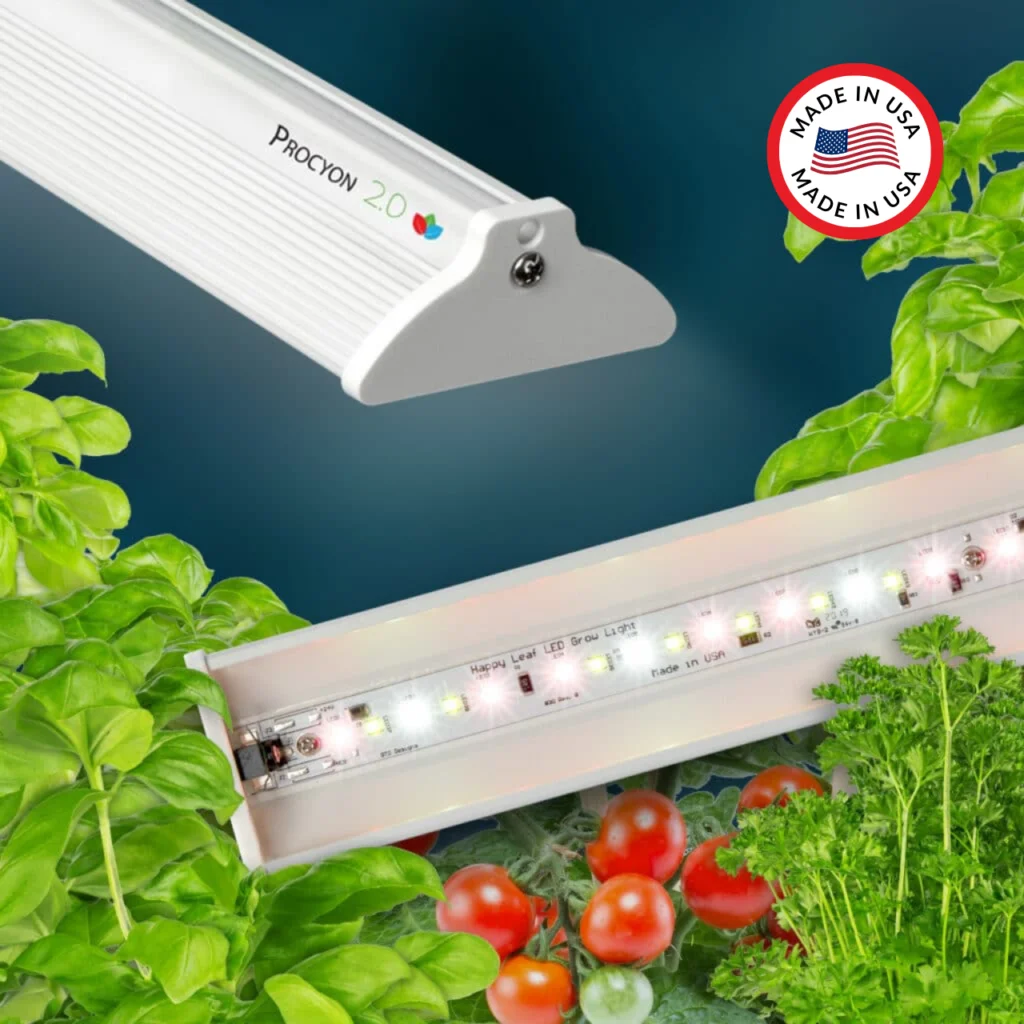
How Much Light Do Tomatoes Need Indoors?
Tomatoes thrive with 16-18 hours of light daily. Tomatoes need a PAR (photosynthetic active radiation) reading of 400 or more to produce flower and fruit. PAR is the portion of the light spectrum used by plants for photosynthesis. Learn more about PAR and other important grow light metrics by reading our blog post, What You Really Need to Know About Grow Lights.
Do I have to use a timer?
You can have the ideal setup and the most efficient LED grow light, but it’s crucial to have a proper lighting schedule in place. While a timer isn’t technically necessary, it streamlines your growing process and simplifies your life by eliminating the need to remember to turn your grow light on and off.
How much does it cost to run?
Running the 17″ Happy Leaf LED Procyon 2.0 for 16 hours a day will only cost you about 5¢ a day!
The Best Containers for Indoor Tomato Growing
Selecting the appropriate container is crucial for supporting plant growth and maintaining moisture. We recommend the 14″ self-watering pots from Bloem or this Walmart brand These pots have built-in reservoirs to provide a steady supply of nutrient-rich water.
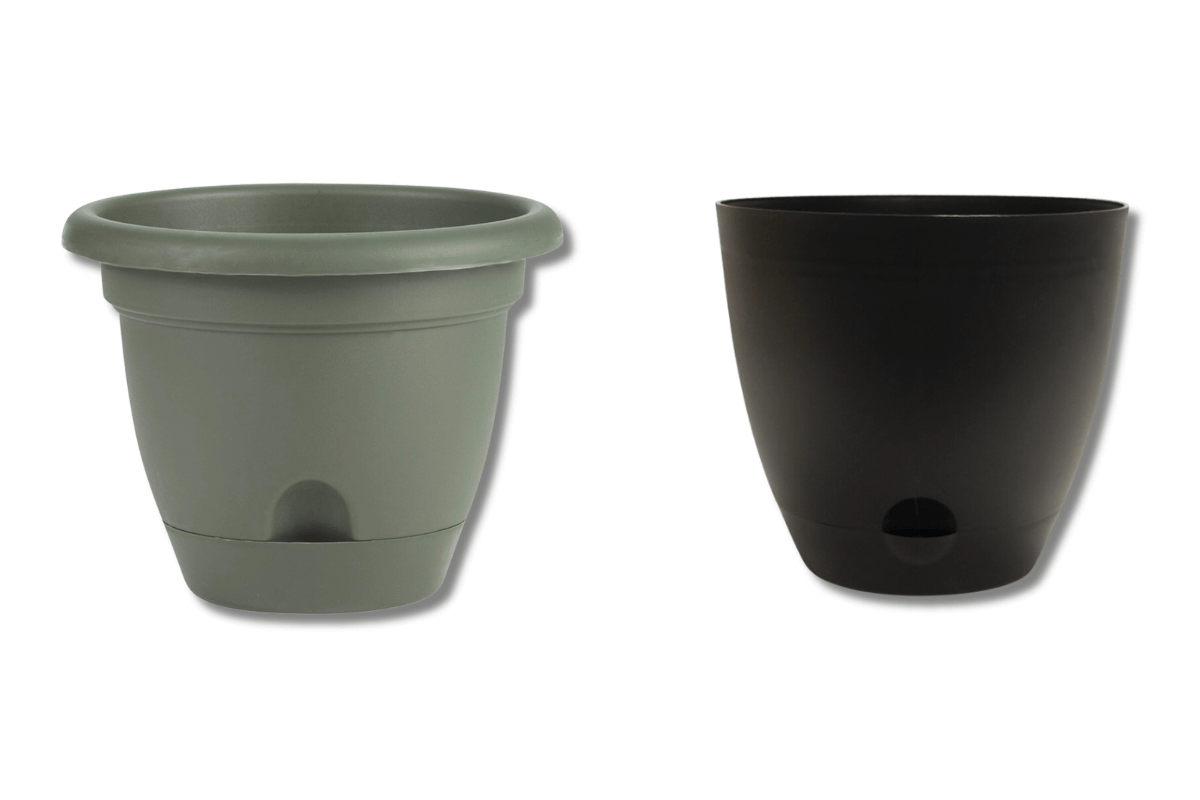
Plant Supports and Tomato Cages
Tomato cages can also be a great option and can be found online or at many big box stores. Make sure that the dimensions of the tomato cage are an appropriate fit for the size of container you choose.
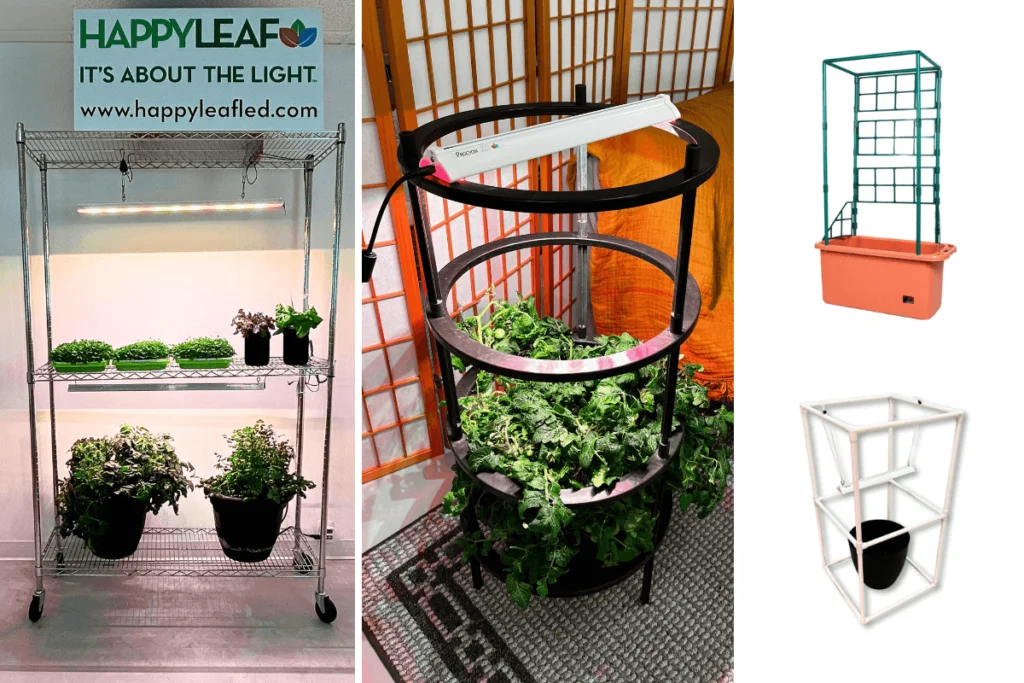
- Wire bakers rack or shelving unit – Big box stores, online, thrift stores
- Classic round tomato cage
- HydroFarm Tomato Trellis Planter – Amazon
- Do-it-yourself PVC pipe tomato cage – see below to download instructions and make yourself!
- Get creative!
Want to make your own PVC tomato cage?
Sign up for occasional emails from Happy Leaf LED and instantly download instructions to build your own PVC tomato cage.
Optimal Growing Medium
For the best results, we recommend using a 50/50 mix of coconut coir and vermiculite:
- Coconut Coir: Readily available at most garden centers, big box stores and online. Coconut coir or coco coir, comes in bricks that expand with water, making it affordable and space-efficient option for growing tomatoes indoors.
- Vermiculite: Readily available at most garden centers, big box stores and online. Vermiculite helps aerate the growing medium and promotes good drainage and overall health for the plant.
You can substitute perlite for vermiculite. While traditional soil can also be used, the coco coir and vermiculite mix reduces pests, weight, and enhances growth conditions for indoor tomatoes.

Nutrients
We recommend using the MaxiGro + MaxiBloom system from General Hydroponics as they are very straightforward and don’t require a lot of mixing or multiple parts.
Masterblend is another great option for indoor tomato gardening, but requires a little more attention to detail when measuring the 2-part system.
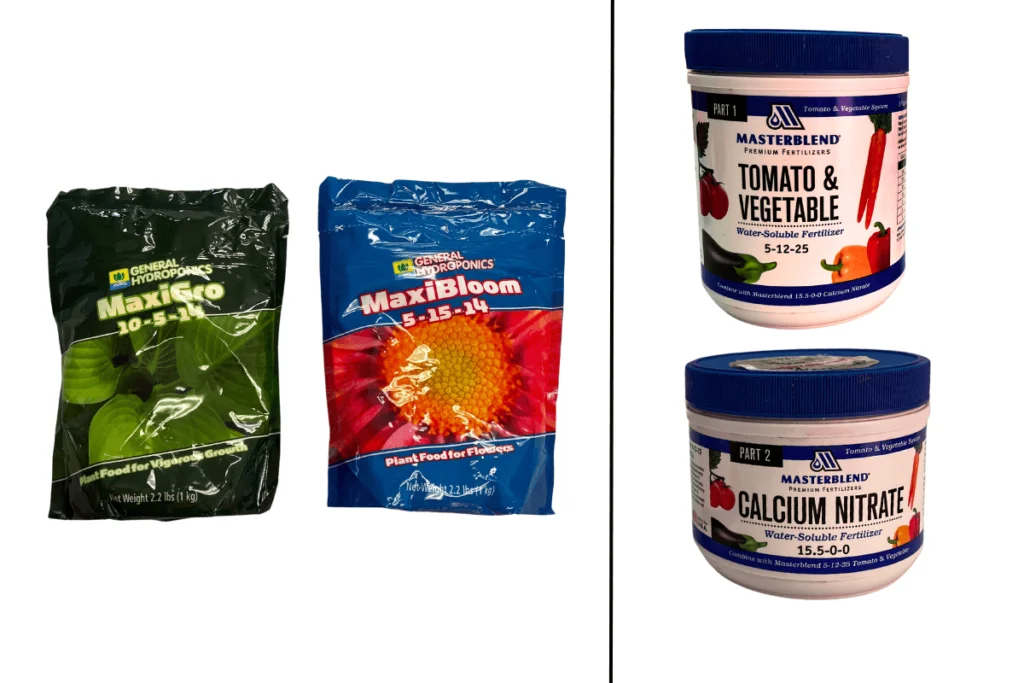
FAQs About Growing Tomatoes Indoors
- How long does it take to grow tomatoes indoors with LED lights? On average, it takes 60-80 days from seed to harvest, depending on the variety.
- What if I don’t use a self-watering container? If not using a self-watering pot -Allow the top inch of soil to dry out between watering. Overwatering can lead to root rot, while underwatering can cause fruit to split.
- Can a fluorescent light grow tomatoes? No, fluorescent lights do not produce enough photosynthetically active radiation (PAR) or proper light spectrum to allow tomato plants to reach the flowering stage.
- How often should I water my tomato plants? Water deeply but let the top inch of soil dry out between watering. Self-watering containers help maintain proper moisture levels.
- Do I need to pollinate indoor tomatoes? No, tomatoes are self-pollinating.
- Do tomatoes ripen after being picked? Yes, tomatoes continue to ripen off the vine if picked at the mature green stage or later. Store them at room temperature for best results.
- How can I tell if I’m overwatering my tomatoes? Signs of overwatering include yellowing leaves, slow growth, and waterlogged soil.
- Can you suggest a plant stand for your 33-inch light? Tomato Trellis
- Do I need a grow tent? No, as long as your temperature in your grow area is between 65° – 80°. If you choose to grow in an area that is outside of that range, a grow tent may be a good option.
- What are the green buckets for? We like to set the pots up off the floor a little ways- it’s easier to put the water spout into the watering lip of the pot. The buckets also serve as a way to catch a little overflow water as well.
- Every time you water, do you only use nutrient water? Or do you water some days and nutrient water other days? Nutrient water should be used whenever watering your tomato plant
Conclusion
Growing tomatoes indoors with LED grow lights is simple and rewarding. With the right setup and care, you can enjoy fresh tomatoes year-round, no matter where you live.

